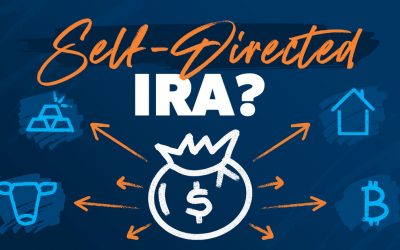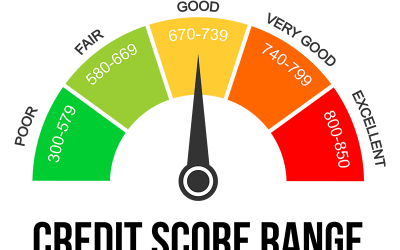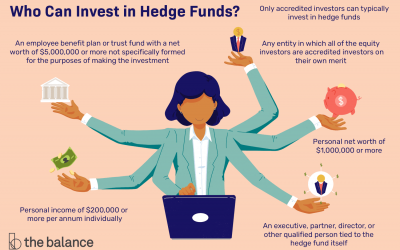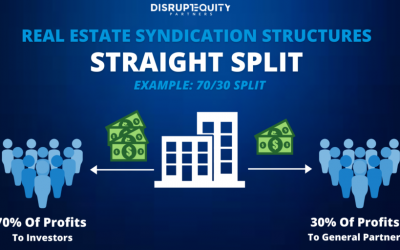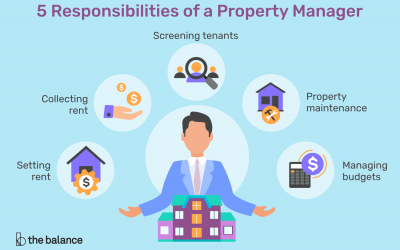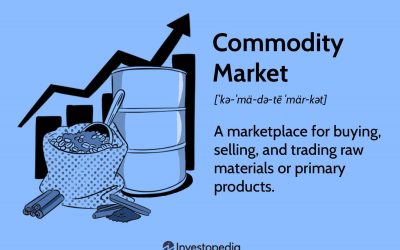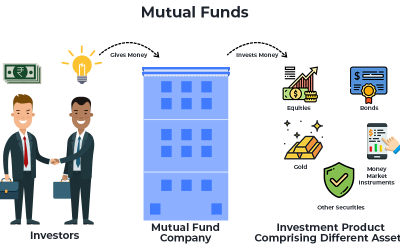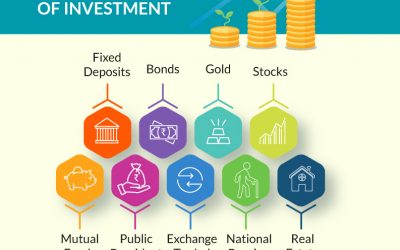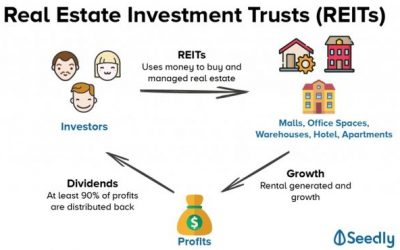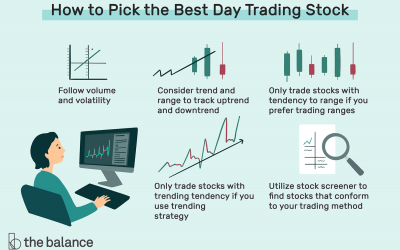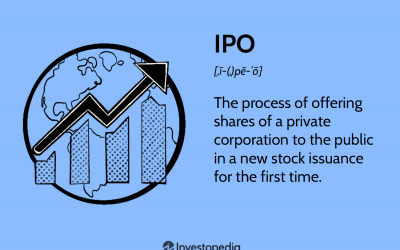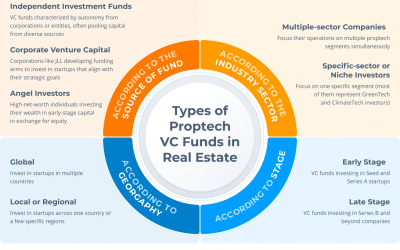Invest with a Self-Directed IRA, Like Peter Thiel
Peter Thiel made headlines with his unique approach to investing through his self-directed IRA, particularly by utilizing it to invest in early-stage startups like Facebook. Here’s a general outline of how you might follow a similar path, but please be aware that this isn’t financial advice and comes with significant risks:
Establish a Self-Directed IRA (SDIRA): Start by setting up a self-directed IRA with a qualified custodian. Unlike traditional IRAs, SDIRAs allow you to invest in a broader range of assets beyond stocks, bonds, and mutual funds. This can include real estate, private equity, precious metals, and even startups.
Contribute Funds: Once your SDIRA is set up, you can contribute funds to it just like you would with a regular IRA. There are annual contribution limits imposed by the IRS, so make sure you adhere to those.
Due Diligence: Before investing, conduct thorough due diligence on any potential investment opportunities. This is especially crucial for investments in startups, as they carry high risks. Consider factors like the business model, market potential, competition, management team, and exit strategy.
Investment Selection: Identify startups or other alternative investments that align with your risk tolerance, investment goals, and expertise. You may need to network within entrepreneurial communities or use platforms that connect investors with startups seeking funding.
Investment Process: Once you’ve identified a promising opportunity, work with your SDIRA custodian to execute the investment. The custodian will handle the necessary paperwork and ensure compliance with IRS regulations regarding IRA investments.
Manage and Monitor: After making investments, stay actively involved in monitoring their progress. For startups, this might involve attending shareholder meetings, reviewing financial reports, and staying informed about industry trends. Remember that startup investments are typically illiquid and may require several years before seeing any returns, if at all.
Tax Considerations: Be aware of the tax implications associated with investments made through an IRA. For example, any gains realized within the IRA are typically tax-deferred or tax-free, depending on whether it’s a traditional or Roth IRA. However, there may be unrelated business income tax (UBIT) consequences for certain types of investments, such as leveraged real estate or actively managed businesses.
Seek Professional Advice: Given the complexities and risks involved in alternative investments, including startups, it’s wise to consult with financial advisors, tax professionals, and legal experts who specialize in self-directed retirement accounts.
Remember that while Peter Thiel’s success with his self-directed IRA investments is well-documented, it’s an unconventional and high-risk strategy that may not be suitable for everyone. Be sure to carefully evaluate your own financial situation, risk tolerance, and investment objectives before pursuing similar strategies.
Building A Strong Credit Score
Building a strong credit score is essential for accessing favorable financing options when building a real estate portfolio. Here are some steps you can take to improve your credit score:
Check Your Credit Report: Obtain a copy of your credit report from each of the major credit bureaus (Experian, TransUnion, and Equifax) and review it for any errors or inaccuracies. Dispute any discrepancies you find.
Pay Bills on Time: Payment history is one of the most significant factors in your credit score. Make sure to pay all your bills, including credit cards, loans, and utilities, on time.
Reduce Credit Card Balances: Aim to keep your credit card balances low relative to your credit limits. High credit utilization can negatively impact your credit score. Try to pay down existing balances as much as possible.
Don’t Close Unused Accounts: Closing old credit card accounts can reduce your available credit and shorten your credit history, both of which can lower your credit score. Instead, consider keeping these accounts open, even if you don’t use them regularly.
Diversify Your Credit Mix: Having a mix of different types of credit, such as credit cards, auto loans, and mortgages, can positively impact your credit score. However, only take on new credit accounts if you need them and can manage them responsibly.
Limit New Credit Inquiries: Each time you apply for new credit, it triggers a hard inquiry on your credit report, which can temporarily lower your score. Minimize the number of new credit inquiries, especially within a short period.
Become an Authorized User: If you have a family member or friend with a long, positive credit history, consider asking them to add you as an authorized user on one of their credit card accounts. This can potentially boost your credit score, but be sure to choose someone who manages their credit responsibly.
Be Patient: Building good credit takes time, so be patient and consistent with your efforts. Focus on responsible credit management habits, and your score will gradually improve over time.
By taking these steps, you can strengthen your credit score, which will help you qualify for better financing options as you build your real estate portfolio.
Exiting Your Startup?
Starting up a company typically involves several key steps:
Idea Generation: Entrepreneurs come up with a business idea or identify a problem they want to solve.
Market Research: They conduct thorough research to understand the market demand, competition, and potential customers for their product or service.
Business Planning: Entrepreneurs create a business plan outlining their goals, target market, revenue model, and operational strategy.
Funding: They may seek funding from various sources such as personal savings, friends and family, angel investors, venture capitalists, or through crowdfunding platforms.
Legal Setup: Entrepreneurs register their company, obtain necessary licenses and permits, and set up legal structures such as partnerships, LLCs, or corporations.
Product Development: They develop their product or service, often iterating based on feedback from early customers or users.
Marketing and Sales: Entrepreneurs market their product or service to attract customers and generate sales.
Scaling: Once the business gains traction, they focus on scaling operations to meet growing demand.
Exiting a company can happen through various means:
Acquisition: A larger company buys the startup, often to integrate its technology, talent, or customer base into their own operations.
IPO (Initial Public Offering): The startup goes public by offering shares to the public through a stock exchange, allowing early investors and founders to sell their shares and exit.
Merger: The startup merges with another company to form a larger entity.
Management Buyout: The existing management team buys out the ownership stake from investors or founders.
Shutdown: In some cases, startups may fail to achieve success and are shut down, resulting in the liquidation of assets and closure of operations.
Each path to exit has its own considerations in terms of financial outcomes, impact on employees, and future opportunities for founders and investors.
The Future of AI And Investments
The future of AI and investments is promising, as AI technologies have the potential to revolutionize how investment decisions are made, portfolios are managed, and risks are mitigated. Here are some key ways AI is expected to impact the investment landscape:
Data Analysis and Insights: AI algorithms can analyze vast amounts of data from diverse sources, including market trends, financial statements, news articles, social media, and alternative data sources. By processing and interpreting this data in real-time, AI can identify patterns, correlations, and anomalies that human analysts might overlook, providing valuable insights for investment decision-making.
Quantitative Trading and Algorithmic Investing: AI-powered algorithms can execute trades automatically based on predefined rules and strategies, such as trend-following, statistical arbitrage, or machine learning models. These quantitative trading strategies can exploit market inefficiencies, minimize emotional biases, and optimize trading execution, leading to potentially higher returns and lower transaction costs.
Portfolio Optimization: AI can optimize investment portfolios by analyzing asset correlations, risk factors, and return expectations to achieve desired investment objectives, such as maximizing returns, minimizing risk, or achieving a target asset allocation. AI-driven portfolio management platforms can rebalance portfolios dynamically in response to changing market conditions and investor preferences, enhancing diversification and performance.
Risk Management and Fraud Detection: AI technologies can assess investment risks, identify potential threats, and detect fraudulent activities in financial markets. By analyzing historical data, market trends, and macroeconomic indicators, AI models can quantify various types of risk, such as market risk, credit risk, liquidity risk, and operational risk, helping investors make informed decisions and mitigate potential losses.
Alternative Investments and Asset Classes: AI can facilitate the analysis and valuation of alternative investments, such as private equity, venture capital, real estate, and cryptocurrencies. AI-driven models can evaluate investment opportunities, estimate intrinsic values, and assess risk-adjusted returns in non-traditional asset classes, expanding investment options and diversification opportunities for investors.
Robo-Advisors and Financial Planning: AI-powered robo-advisors can provide personalized investment advice, asset allocation recommendations, and financial planning services to individual investors at a fraction of the cost of traditional financial advisors. By leveraging machine learning algorithms and natural language processing techniques, robo-advisors can assess investors’ risk tolerance, investment goals, and financial preferences to offer customized investment solutions tailored to their needs.
Overall, AI is expected to play a transformative role in the investment industry by augmenting human decision-making, improving investment efficiency, and democratizing access to sophisticated investment strategies and tools. However, it’s essential to address potential challenges related to data privacy, algorithmic bias, regulatory compliance, and ethical considerations to ensure that AI technologies are deployed responsibly and ethically in the investment sector.
AI and Futuristic Real Estate Predictions
Artificial intelligence (AI) is poised to have a significant impact on the future of real estate in various ways:
Property Search and Recommendation: AI algorithms can analyze vast amounts of data to provide personalized property recommendations based on a buyer’s preferences, budget, location, and other criteria. This can streamline the property search process and improve the accuracy of matching buyers with suitable listings.
Predictive Analytics: AI can be used to forecast market trends, property values, and investment opportunities by analyzing historical data, market indicators, and economic factors. This predictive analytics capability can help investors and developers make informed decisions about buying, selling, or investing in real estate.
Property Valuation: AI-powered valuation models can provide more accurate and timely property valuations by considering a wide range of factors, including comparable sales, market trends, property condition, and location data. This can benefit sellers, buyers, lenders, and appraisers in determining fair market values and assessing property risk.
Smart Buildings and Property Management: AI-driven smart building technologies can optimize energy efficiency, automate maintenance tasks, and enhance security in commercial and residential properties. These systems can monitor and control various building systems in real-time, leading to cost savings, improved tenant satisfaction, and better asset performance.
Customer Service and Communication: AI-powered chatbots and virtual assistants can handle inquiries, schedule appointments, and provide information to clients and tenants. These AI agents can offer 24/7 support, answer frequently asked questions, and assist users in navigating the real estate process more efficiently.
Risk Assessment and Fraud Detection: AI algorithms can analyze financial data, credit scores, and transaction histories to assess borrower risk and detect fraudulent activities in mortgage lending and real estate transactions. This can help lenders, insurers, and regulators mitigate risks and prevent financial losses.
Construction and Development: AI technologies such as generative design, robotics, and 3D printing can streamline the construction process, reduce costs, and improve the quality of buildings. AI can optimize building designs, automate repetitive tasks, and enhance safety on construction sites, leading to faster project delivery and increased sustainability.
Overall, AI has the potential to revolutionize the real estate industry by enabling smarter decision-making, improving operational efficiency, and enhancing the customer experience across various segments of the market. However, it’s essential to address potential challenges related to data privacy, algorithm bias, and workforce displacement to ensure that AI technologies are deployed responsibly and ethically in the real estate sector.
Real Estate Market in the Next 10 Years?
Predicting the real estate market over the next decade involves considering various factors like economic trends, population growth, housing demand, interest rates, government policies, and technological advancements. While I can’t offer a crystal-clear prediction, here are some trends that might shape the real estate market in the coming years:
Urbanization vs. Suburbanization: The ongoing trend of urbanization might continue, especially in developing countries. However, recent shifts due to the COVID-19 pandemic have also highlighted the appeal of suburban and rural areas. The balance between urban and suburban living could change, affecting property values in different areas.
Technology Integration: Advancements like virtual reality tours, smart home features, and online real estate platforms are likely to become more prevalent, influencing how properties are marketed, sold, and managed.
Sustainability and Green Building: With increasing environmental awareness, there might be a growing demand for eco-friendly and energy-efficient properties. Sustainable building practices could become more mainstream, impacting property development and investment decisions.
Demographic Changes: As millennials and Gen Z become major players in the housing market, their preferences and priorities—such as sustainability, connectivity, and flexible living arrangements—could drive changes in housing designs and locations.
Interest Rates: Fluctuations in interest rates can significantly affect the real estate market. If interest rates remain low, it might encourage borrowing and stimulate housing demand. However, a sudden increase could lead to decreased affordability and slower market activity.
Government Policies: Changes in regulations, tax policies, and government initiatives can influence property prices and market dynamics. For example, incentives for affordable housing or zoning regulations might impact development patterns.
Global Economic Conditions: Economic factors such as GDP growth, employment rates, inflation, and geopolitical stability can affect real estate markets worldwide. Economic downturns can lead to decreased demand and lower property prices, while periods of prosperity can drive investment and growth.
Housing Affordability: Affordability issues in many markets could continue to be a concern, especially in major cities. This might lead to increased demand for rental properties, co-living spaces, or innovative housing solutions.
Overall, while it’s challenging to predict the real estate market with certainty, staying informed about these trends and understanding local market conditions will be crucial for investors, developers, and homebuyers in navigating the real estate landscape over the next decade.
Several apps cater to real estate investors by providing tools for managing tenants, rental properties, and payment systems. Here are some popular ones:
Cozy: Cozy offers a comprehensive platform for landlords to manage rental properties, screen tenants, collect rent payments, and handle maintenance requests. It also provides features for lease management and rental accounting.
Buildium: Buildium is a property management software designed for real estate investors, property managers, and homeowner associations. It offers features for tenant screening, lease management, rent collection, maintenance tracking, and financial reporting.
Rentec Direct: Rentec Direct is a property management software solution that helps landlords and property managers streamline rental property operations. It offers tools for tenant screening, online rent collection, expense tracking, and property maintenance.
RentRedi: RentRedi is a mobile-friendly property management app that simplifies landlord tasks such as tenant screening, lease signing, rent collection, and maintenance coordination. It also provides features for communication with tenants and document storage.
Landlord Studio: Landlord Studio is a rental property management app that offers features for tracking rental income and expenses, managing lease agreements, and generating financial reports. It also includes tools for tenant communication and rent reminders.
TenantCloud: TenantCloud is a cloud-based property management platform that helps landlords and property managers manage rental properties, screen tenants, collect rent payments, and handle maintenance requests. It also offers features for online lease signing and communication with tenants.
Avail: Avail is a rental property management platform that simplifies the process of finding tenants, screening applicants, and managing rental properties. It offers features for online rent collection, lease management, maintenance tracking, and financial reporting.
Rentigo: Rentigo is a property management app that offers tools for tenant screening, rent collection, maintenance requests, and communication with tenants. It also provides features for tracking rental income and expenses and generating financial reports.
Hemlane: Hemlane is a property management platform that helps landlords and property managers automate rental property tasks such as tenant screening, lease signing, rent collection, and maintenance coordination. It also offers features for communication with tenants and financial reporting.
Stessa: Stessa is a rental property management platform that offers features for tracking rental income and expenses, managing leases, and generating financial reports. It also provides tools for analyzing property performance and optimizing investment strategies.
These apps offer a range of features and pricing plans, so real estate investors can choose the one that best fits their needs and budget.
Is AI Replacing Real Estate Agents?
AI has indeed started to make inroads into the real estate industry, but it’s more about augmenting the role of real estate agents rather than replacing them entirely. Here are some ways AI is impacting the industry:
Data Analysis: AI can analyze vast amounts of data to provide insights into market trends, property valuations, and investment opportunities, empowering real estate agents with valuable information to better serve their clients.
Personalized Recommendations: AI-powered algorithms can generate personalized property recommendations based on factors such as location preferences, budget constraints, and lifestyle choices, enhancing the customer experience and streamlining the property search process.
Automated Communication: AI chatbots and virtual assistants can handle routine inquiries, schedule appointments, and provide instant responses to client questions, freeing up real estate agents to focus on more complex tasks and client interactions.
Predictive Analytics: AI algorithms can forecast market trends, identify emerging opportunities, and anticipate future demand, enabling real estate agents to make more informed decisions and strategic investments.
Virtual Tours and 3D Visualization: AI technologies, such as virtual reality (VR) and augmented reality (AR), enable immersive virtual property tours and 3D visualization, allowing buyers to explore properties remotely and visualize potential renovations or modifications.
Automated Transaction Management: AI-powered platforms can automate various aspects of the transaction process, including paperwork, contract management, and legal documentation, reducing administrative burdens and streamlining the closing process.
While AI has the potential to automate certain tasks and improve efficiency in the real estate industry, human expertise, empathy, and interpersonal skills remain essential for complex negotiations, relationship building, and providing personalized advice and support to clients. Therefore, rather than replacing real estate agents, AI is likely to complement their roles, enabling them to deliver greater value to their clients and adapt to evolving market dynamics.
2024 Top Real Estate Concerns
In 2024, the top real estate concerns may include:
Market Volatility: Economic uncertainty, geopolitical tensions, and other global factors can contribute to market volatility, impacting property values and investment decisions.
Housing Affordability: The ongoing challenge of housing affordability persists, particularly in urban centers and high-demand areas, where limited supply meets high demand, driving up prices and making homeownership less attainable for many.
Sustainability and Resilience: With increasing awareness of climate change and environmental sustainability, there’s a growing emphasis on green building practices, energy efficiency, and resilience measures in real estate development and management.
Technology Integration: The integration of technology in real estate, including PropTech solutions, smart buildings, and digital platforms for property transactions, management, and marketing, is reshaping the industry and posing challenges and opportunities for traditional players.
Regulatory Changes: Shifts in regulations and government policies, such as tax reforms, zoning laws, and land use regulations, can have significant impacts on real estate markets, influencing investment strategies and development trends.
Remote Work Trends: The rise of remote work and hybrid work models following the COVID-19 pandemic has altered the demand for commercial real estate, with implications for office space utilization, location preferences, and investment priorities.
Supply Chain Disruptions: Disruptions in global supply chains, labor shortages, and material cost inflation can affect construction timelines, project costs, and property development feasibility.
Demographic Shifts: Changing demographics, including population growth, aging populations, and migration patterns, influence housing demand, preferences, and market dynamics in different regions.
Health and Safety Concerns: The ongoing focus on health and safety, including concerns related to pandemics and public health emergencies, impacts design standards, building codes, and tenant expectations in real estate markets.
Geopolitical Risks: Geopolitical tensions, trade disputes, and geopolitical risks can create uncertainties in real estate markets, affecting investor confidence, capital flows, and market stability.
These concerns may vary in significance depending on the region, market segment, and specific circumstances, but they collectively shape the landscape of the real estate industry in 2024.
Crypto Funds? What are They?
A crypto fund is an investment vehicle that pools capital from investors and allocates it to various cryptocurrency assets or related instruments. These funds provide investors with exposure to the burgeoning digital asset market, allowing them to gain diversified exposure to cryptocurrencies without the need to directly buy, hold, and manage individual digital assets themselves. Crypto funds can vary widely in their investment strategies, risk profiles, and regulatory structures, catering to different investor preferences and risk appetites.
Here are some key aspects of crypto funds:
Investment Strategies:
Passive Funds: Some crypto funds passively track the performance of a specific cryptocurrency index, such as the Bloomberg Galaxy Crypto Index or the Bitwise 10 Crypto Index. These funds aim to replicate the returns of the underlying index by holding a diversified portfolio of cryptocurrencies in proportion to their weights in the index.
Actively Managed Funds: Other crypto funds employ active management strategies, where fund managers actively trade and rebalance the fund’s portfolio in response to market conditions, news events, or proprietary research. Active managers may seek to generate alpha (excess returns) by taking advantage of market inefficiencies, arbitrage opportunities, or sector-specific trends within the cryptocurrency market.
Quantitative and Algorithmic Funds: Some crypto funds use quantitative models or algorithmic trading strategies to execute trades based on predefined criteria, technical indicators, or machine learning algorithms. These funds may engage in high-frequency trading, market-making, or statistical arbitrage to capitalize on short-term price movements and generate consistent returns.
Venture Capital and Private Equity Funds: Certain crypto funds focus on investing in early-stage blockchain projects, initial coin offerings (ICOs), or tokenized securities through venture capital or private equity-style investments. These funds may take equity stakes in blockchain startups, participate in token sales, or provide financing in exchange for tokens or other digital assets.
Diversification:
Crypto funds offer investors exposure to a diversified portfolio of cryptocurrencies, which may include well-established assets such as Bitcoin and Ethereum, as well as emerging altcoins, tokens, and decentralized finance (DeFi) protocols. Diversification across multiple assets can help mitigate individual asset risk and volatility, reducing the impact of adverse price movements on the fund’s overall performance.
Risk Management:
Crypto funds typically implement risk management techniques to manage portfolio risk and protect investor capital. These may include position limits, stop-loss orders, portfolio rebalancing, and hedging strategies using derivatives or options contracts. Risk management is particularly crucial in the highly volatile and speculative cryptocurrency market, where prices can experience rapid fluctuations and significant drawdowns.
Regulatory Considerations:
Regulatory considerations play a significant role in the operation and distribution of crypto funds, as the regulatory landscape for digital assets continues to evolve globally. Depending on the jurisdiction and fund structure, crypto funds may need to comply with securities laws, anti-money laundering (AML) regulations, know-your-customer (KYC) requirements, and tax regulations. Some crypto funds operate as regulated investment vehicles, while others may operate in jurisdictions with more permissive regulatory frameworks or seek regulatory exemptions or licenses.
Access and Liquidity:
Investing in a crypto fund provides investors with access to the cryptocurrency market through a regulated and professionally managed investment vehicle. This can be particularly appealing for institutional investors, family offices, and high-net-worth individuals who may have limited experience or infrastructure to custody and trade digital assets securely. Additionally, crypto funds may offer enhanced liquidity compared to direct investments in individual cryptocurrencies, as investors can buy and sell fund shares on secondary markets or through fund redemptions.
Overall, crypto funds play a crucial role in democratizing access to the cryptocurrency market, providing investors with diversified exposure to digital assets and professional management expertise to navigate the complexities and risks of investing in this emerging asset class. However, investors should conduct thorough due diligence, understand the fund’s investment strategy and risk factors, and consider their own investment objectives and risk tolerance before investing in a crypto fund.
Hedgefunds, A Good Investment Strategy?
ChatGPT
A hedge fund is a type of investment fund that pools capital from accredited or institutional investors and employs a variety of investment strategies to generate returns. Unlike traditional mutual funds, hedge funds often have greater flexibility in their investment approach, allowing them to pursue both long and short positions in various asset classes, employ leverage, and use derivatives and other complex financial instruments to enhance returns or mitigate risk.
Here are some key characteristics of hedge funds:
Managerial Expertise: Hedge funds are typically managed by experienced investment professionals who employ active management strategies to seek out market inefficiencies, exploit opportunities, and generate alpha (excess returns) for investors.
Diverse Investment Strategies: Hedge funds can utilize a wide range of investment strategies, including long/short equity, global macro, event-driven, quantitative/statistical arbitrage, distressed debt, merger arbitrage, and relative value strategies, among others. This diversity allows hedge funds to adapt to changing market conditions and capitalize on a broad array of investment opportunities.
Performance-Based Compensation: Hedge fund managers often receive performance-based compensation, typically in the form of a management fee (usually around 1-2% of assets under management) and a performance fee (typically 20% of profits above a certain threshold, known as the “high-water mark”). This fee structure aligns the interests of the fund manager with those of the investors, as managers are incentivized to generate positive returns and outperform the market.
Limited Regulation: Hedge funds are subject to less regulatory oversight compared to mutual funds, allowing them greater flexibility in their investment strategies and operations. However, this lack of regulation also means that hedge funds may engage in riskier or less transparent practices, and investors should conduct thorough due diligence before investing.
Investing in a hedge fund typically requires meeting certain eligibility criteria, such as being an accredited investor or qualified purchaser, as defined by securities regulations in the investor’s jurisdiction. These criteria generally involve meeting minimum income or net worth thresholds, as well as demonstrating a level of financial sophistication and understanding of the risks associated with hedge fund investing.
Once eligible, investors can invest in a hedge fund by:
Identifying Suitable Funds: Investors can research and evaluate different hedge funds based on their investment objectives, strategies, historical performance, risk profiles, fees, and other relevant factors. This process may involve consulting with financial advisors, conducting due diligence on fund managers, and reviewing fund offering documents, such as private placement memoranda (PPMs) or prospectuses.
Completing Subscription Documents: Investors interested in investing in a hedge fund typically need to complete subscription documents provided by the fund manager or sponsor. These documents may include a subscription agreement, investor questionnaire, and other legal and regulatory disclosures.
Meeting Minimum Investment Requirements: Hedge funds often have minimum investment requirements, which can vary widely depending on the fund’s strategy, size, and investor base. Minimum investments can range from tens of thousands to millions of dollars or more, and investors should ensure they meet the fund’s minimum requirements before committing capital.
Executing Investment Terms: Once the subscription documents are completed and submitted, investors typically wire funds to the hedge fund’s designated bank account or custodian, in accordance with the terms outlined in the offering documents. Upon receipt of funds, investors become limited partners or shareholders in the hedge fund and are entitled to participate in the fund’s investment activities and share in any profits or losses generated by the fund.
It’s important for investors to conduct thorough due diligence and carefully consider the risks and potential rewards associated with hedge fund investing before making any commitments. While hedge funds can offer opportunities for diversification, alpha generation, and downside protection, they also involve risks such as illiquidity, leverage, manager risk, and market volatility. Consulting with financial advisors, conducting independent research, and seeking professional guidance can help investors make informed decisions and navigate the complexities of hedge fund investing.
Hedging, A Risk Management Strategy
Hedging is a risk management strategy employed by investors to offset potential losses in one asset or portfolio by taking an opposite position in another asset or financial instrument. The goal of hedging is to reduce the overall risk exposure of an investment portfolio and protect against adverse market movements. Here are several ways investors can hedge their investments, along with detailed explanations of each:
Options Contracts:
Put Options: Put options give the holder the right, but not the obligation, to sell an underlying asset at a predetermined price (strike price) within a specified period (expiration date). Investors can purchase put options on individual stocks, stock indices, or other financial instruments to hedge against potential downside risk. If the price of the underlying asset declines, the value of the put option increases, offsetting losses in the investor’s portfolio.
Call Options: Call options provide the holder with the right to buy an underlying asset at a predetermined price within a specified period. While primarily used for speculative purposes, call options can also be employed as part of a hedging strategy to protect against upside risk or to hedge short positions.
Futures Contracts:
Short Futures Position: Investors can hedge against declining prices of commodities, stock indices, or other assets by selling futures contracts. By taking a short position in futures, investors can profit from price declines in the underlying asset, thereby offsetting losses in their investment portfolio if the asset’s value decreases.
Long Futures Position: Conversely, investors can hedge against rising prices by purchasing futures contracts, effectively locking in the current price of the underlying asset and mitigating the risk of future price increases.
Forward Contracts:
Similar to futures contracts, forward contracts allow investors to lock in the future price of an asset at a predetermined date. Forward contracts are customized agreements between two parties, typically traded over-the-counter (OTC), and are commonly used to hedge against currency risk, interest rate risk, or commodity price fluctuations.
Short Selling:
Short selling involves borrowing shares of a security from a broker and selling them on the open market with the intention of buying them back at a later time to return to the lender. Investors can use short selling as a hedging strategy to profit from declining prices of specific stocks or to offset gains in other parts of their portfolio.
Inverse ETFs and Derivatives:
Inverse exchange-traded funds (ETFs) and other inverse derivatives are designed to move in the opposite direction of their underlying benchmark or index. By investing in inverse ETFs or derivatives, investors can hedge against downturns in specific sectors, markets, or asset classes without the need for complex options or futures strategies.
Diversification:
Diversification is a fundamental risk management technique that involves spreading investments across different asset classes, sectors, regions, and investment strategies. By diversifying their portfolios, investors can reduce the overall risk exposure and volatility, thereby mitigating the impact of adverse market movements on their investment returns.
Non-Correlated Assets:
Investing in non-correlated assets or uncorrelated strategies can provide additional diversification benefits and hedge against systemic risks in the financial markets. Non-correlated assets, such as gold, real estate, or alternative investments like hedge funds or private equity, may exhibit different return patterns compared to traditional stocks and bonds, making them valuable additions to a diversified investment portfolio.
Risk Management Techniques:
Beyond specific hedging instruments, investors can implement various risk management techniques to protect their investments, such as setting stop-loss orders, establishing position limits, maintaining disciplined portfolio rebalancing, and conducting thorough fundamental and technical analysis to identify potential risks and opportunities in the market.
It’s important for investors to carefully consider their investment objectives, risk tolerance, and market outlook when implementing hedging strategies. While hedging can help mitigate downside risk and preserve capital in adverse market conditions, it also involves costs, complexities, and potential trade-offs that should be evaluated in the context of the investor’s overall portfolio strategy. Additionally, hedging strategies may not always be effective or successful in fully eliminating investment risk, and investors should seek professional advice or conduct thorough research before implementing any hedging techniques.
Hotel Investors During the Pandemic
During the COVID-19 pandemic, some hotel investors were able to acquire properties at deeply discounted prices in South Florida for a “penny on the dollar” due to several factors:
Impact of the Pandemic on Hospitality Industry: The hospitality industry, including hotels, was severely affected by the COVID-19 pandemic. Travel restrictions, lockdowns, and decreased consumer confidence led to a significant drop in hotel occupancy rates and revenue. Many hotels struggled to cover operating expenses, mortgage payments, and other financial obligations, resulting in distressed sales and opportunities for investors to acquire properties at discounted prices.
Financial Distress of Hotel Owners: As the pandemic persisted and financial challenges mounted for hotel owners, some were forced to sell their properties to avoid foreclosure or bankruptcy. Distressed hotel owners may have been more willing to negotiate lower sale prices to offload their assets quickly and mitigate further financial losses. This created opportunities for savvy investors to acquire hotels at prices significantly below their pre-pandemic market value.
Lack of Liquidity and Financing Challenges: The economic uncertainty and tightened lending conditions during the pandemic made it difficult for hotel owners to secure financing or refinance existing debt. Limited access to capital constrained their ability to withstand prolonged periods of reduced revenue and prompted some owners to seek buyers for their properties at discounted prices. Cash-rich investors or those with access to alternative financing sources could capitalize on these opportunities and acquire hotels at favorable terms.
Market Timing and Investor Sentiment: Market timing played a crucial role in acquiring hotels at deeply discounted prices during the pandemic. Investors who were prepared to act quickly, had sufficient liquidity, and were willing to take calculated risks in an uncertain market environment were able to capitalize on distressed sale opportunities. Additionally, investor sentiment and confidence in the long-term recovery of the hospitality industry influenced the willingness to invest in hotel properties despite short-term challenges.
Location-Specific Factors: South Florida, known for its vibrant tourism industry and desirable real estate market, experienced unique dynamics during the pandemic. While the region faced significant disruptions to tourism and travel-related activities, the long-term appeal of South Florida as a tourist destination and investment hub remained intact. Investors recognized the resilience of the market and viewed the downturn as a temporary setback, positioning themselves to acquire hotel assets at discounted prices with confidence in future recovery and appreciation potential.
Overall, the convergence of these factors created opportunities for hotel investors to acquire properties in South Florida at prices significantly below their pre-pandemic levels, allowing them to secure assets at a fraction of their true value and potentially realize substantial returns as the hospitality industry rebounds and travel demand recovers.
Syndication, A good Investment?
Syndication, in the context of investment, refers to the pooling of resources from multiple investors to collectively invest in a particular venture or asset. This approach offers several advantages that make it an attractive investment strategy:
Access to Larger Investments: Syndication allows individual investors to participate in larger deals that they might not be able to afford on their own. By pooling resources, investors can collectively access high-value opportunities such as commercial real estate, large-scale development projects, or substantial business acquisitions.
Diversification: Syndication provides diversification benefits by spreading investment across multiple projects or assets within a syndicate. Diversifying across various ventures helps mitigate the risk associated with any single investment. For instance, if one property in a real estate syndication performs poorly, the impact on individual investors is minimized due to their exposure to other properties within the syndicate.
Expertise and Management: Syndication often involves professional syndicators or sponsors who possess specialized knowledge and experience in the targeted investment area. These experts manage the investment process, from identifying opportunities and conducting due diligence to executing the investment strategy and overseeing ongoing operations. Investors benefit from the expertise of the syndicator, reducing their need for in-depth knowledge or active involvement in the day-to-day management of the investment.
Passive Income: Many syndicated investments, such as real estate partnerships or business ventures, generate passive income streams for investors. Income distributions from rental properties, dividends from business profits, or interest payments from debt investments provide investors with regular cash flow without requiring active participation in the operations of the underlying asset.
Scale and Efficiency: Syndication enables efficient capital deployment by aggregating funds from multiple investors to pursue larger opportunities. This scale often translates into better negotiation power, access to favorable financing terms, and lower transaction costs. Additionally, syndication structures allow investors to benefit from economies of scale in asset management and operational efficiencies.
Risk Mitigation: While all investments carry inherent risks, syndication can help mitigate certain risks through shared responsibility and collective decision-making. In real estate syndication, for example, investors may benefit from shared liability protection, as well as risk-sharing mechanisms embedded within the partnership agreements.
Tax Benefits: Syndicated investments may offer tax advantages, such as depreciation deductions, capital gains treatment, or pass-through taxation, depending on the structure of the investment vehicle and the jurisdiction’s tax laws. These tax benefits can enhance the overall returns for investors.
Networking and Opportunities: Participating in syndication provides investors with opportunities to network with other like-minded individuals and industry professionals. Through syndication networks, investors can access a broader range of investment opportunities, share insights and experiences, and build relationships that may lead to future collaborations or deals.
However, it’s essential to note that syndicated investments also come with certain considerations and potential drawbacks. These may include reduced control over decision-making, the need to perform thorough due diligence on the syndicator and investment opportunities, the possibility of conflicts of interest, and the potential for illiquidity depending on the investment structure. As with any investment, thorough research and careful consideration of one’s financial goals and risk tolerance are crucial before participating in syndication.
Investing into AI, The New Avenue!
Investing in AI can offer significant returns on investment due to the transformative potential of artificial intelligence technologies across various industries. Here’s an in-depth exploration of why investing in AI is compelling, who is investing in AI, and an analysis of Nvidia, a prominent player in the AI space:
Why Investing in AI is a Good Return on Investment:
Market Growth: The AI market is experiencing rapid growth driven by increasing demand for AI-powered solutions in sectors such as healthcare, finance, automotive, retail, and manufacturing. Market research forecasts substantial growth in AI spending, driven by advancements in machine learning, deep learning, natural language processing, computer vision, and robotics.
Efficiency and Productivity: AI technologies enable automation, optimization, and efficiency improvements across various processes, leading to cost savings, productivity gains, and competitive advantages for businesses. AI-powered solutions can streamline operations, enhance decision-making, and drive innovation, resulting in improved business performance and profitability.
Insight and Personalization: AI enables data-driven insights and personalized experiences by analyzing vast amounts of data, identifying patterns, and predicting outcomes. Businesses can leverage AI to better understand customer behavior, preferences, and needs, enabling targeted marketing, product recommendations, and customer service enhancements.
Innovation and Disruption: AI fosters innovation and disruption by unlocking new possibilities for problem-solving, creativity, and discovery. Startups and tech companies are leveraging AI to develop groundbreaking products and services, disrupt traditional industries, and create new business models, leading to market differentiation and competitive advantages.
Long-Term Trends: AI is a transformative technology with far-reaching implications for society, economy, and culture. As AI continues to advance and integrate into various aspects of daily life, investing in AI offers exposure to long-term trends and growth opportunities, positioning investors to benefit from the AI revolution.
Who is Investing into AI:
Technology Companies: Leading technology companies, including Google, Amazon, Microsoft, Apple, and Facebook, are heavily investing in AI research, development, and acquisitions to strengthen their AI capabilities and maintain competitive edge across their product portfolios.
Venture Capital Firms: Venture capital firms are actively investing in AI startups and emerging technologies, providing funding, mentorship, and strategic support to fuel innovation and growth in the AI ecosystem. Venture capital investments in AI have surged in recent years, reflecting the growing interest and opportunity in the sector.
Corporate Investors: Established companies across industries are investing in AI to drive digital transformation, improve operational efficiency, and enhance customer experiences. Industries such as healthcare, finance, automotive, retail, and manufacturing are incorporating AI into their business strategies to gain a competitive advantage and adapt to changing market dynamics.
Government and Research Institutions: Governments and research institutions are investing in AI research, development, and education to advance scientific knowledge, foster innovation, and address societal challenges. Public funding initiatives, research grants, and partnerships support AI research and development efforts, driving progress in AI technologies and applications.
Nvidia’s Performance in the AI Space:
Nvidia Corporation is a leading provider of graphics processing units (GPUs), AI computing platforms, and technologies for gaming, professional visualization, data centers, and autonomous vehicles. Nvidia’s GPUs are widely used in AI applications, particularly in deep learning and accelerated computing, due to their parallel processing capabilities and efficiency in handling large-scale data and complex algorithms.
AI Computing Platforms: Nvidia offers a range of AI computing platforms, including the Nvidia DGX systems, Nvidia GPU Cloud (NGC), and Nvidia TensorRT software, designed to accelerate AI model training, inference, and deployment in data centers and edge devices.
Deep Learning: Nvidia’s GPUs are widely adopted for deep learning tasks, such as image recognition, natural language processing, and autonomous driving, due to their superior performance and efficiency. Nvidia’s CUDA parallel computing platform and cuDNN library optimize deep learning frameworks like TensorFlow, PyTorch, and MXNet for GPU acceleration.
Partnerships and Collaborations: Nvidia collaborates with leading technology companies, research institutions, and industry partners to advance AI research, develop innovative AI solutions, and drive adoption across industries. Partnerships with companies like Microsoft, IBM, and AWS expand Nvidia’s reach and ecosystem in the AI market.
Financial Performance: Nvidia has delivered strong financial performance driven by the growing demand for AI computing, gaming, and data center solutions. Revenue from Nvidia’s data center segment, which includes AI computing platforms, has experienced significant growth in recent years, contributing to the company’s overall success and market leadership in AI technologies.
Overall, Nvidia’s focus on AI computing, deep learning, and GPU-accelerated computing positions the company as a key player in the AI space, with opportunities for continued growth and innovation in the evolving AI ecosystem. As AI adoption expands across industries and applications, Nvidia is well-positioned to capitalize on the increasing demand for AI technologies and solutions, driving value for customers, partners, and shareholders alike.
Top 50 Investment Quotes for Inspiration
Inspirational quotes hold significant importance for several reasons:
Motivation and Encouragement: Inspirational quotes have the power to uplift and motivate individuals, providing encouragement during challenging times or when pursuing ambitious goals. They can serve as a source of inspiration to keep going despite obstacles or setbacks.
Perspective Shift: Inspirational quotes often offer a fresh perspective on life, relationships, and personal growth. They can challenge conventional thinking and encourage individuals to adopt a more positive and proactive mindset.
Empowerment: Inspirational quotes empower individuals to believe in themselves and their abilities. They remind us that we have the strength, resilience, and potential to overcome adversity and achieve our dreams.
Here’s a compilation of 50 investment quotes by famous investors:
“The stock market is filled with individuals who know the price of everything, but the value of nothing.” – Philip Fisher
“The four most dangerous words in investing are: ‘This time it’s different.'” – Sir John Templeton
“It’s not whether you’re right or wrong that’s important, but how much money you make when you’re right and how much you lose when you’re wrong.” – George Soros
“The stock market is a device for transferring money from the impatient to the patient.” – Warren Buffett
“Price is what you pay. Value is what you get.” – Warren Buffett
“In the short run, the market is a voting machine, but in the long run, it is a weighing machine.” – Benjamin Graham
“The best investment you can make is in yourself.” – Warren Buffett
“Risk comes from not knowing what you’re doing.” – Warren Buffett
“Be fearful when others are greedy, and greedy when others are fearful.” – Warren Buffett
“It’s far better to buy a wonderful company at a fair price than a fair company at a wonderful price.” – Warren Buffett
“The investor’s chief problem—and even his worst enemy—is likely to be himself.” – Benjamin Graham
“The time of maximum pessimism is the best time to buy, and the time of maximum optimism is the best time to sell.” – Sir John Templeton
“Investing should be more like watching paint dry or watching grass grow. If you want excitement, take $800 and go to Las Vegas.” – Paul Samuelson
“You get recessions, you have stock market declines. If you don’t understand that’s going to happen, then you’re not ready, you won’t do well in the markets.” – Peter Lynch
“The goal of a successful investor is to buy low and sell high.” – Seth Klarman
“The most important quality for an investor is temperament, not intellect.” – Warren Buffett
“Opportunities come infrequently. When it rains gold, put out the bucket, not the thimble.” – Warren Buffett
“Know what you own, and know why you own it.” – Peter Lynch
“The investor’s worst enemy is not the stock market but his own emotions.” – Benjamin Graham
“A great company is one that will be great for a long time.” – Warren Buffett
“Successful investing is about managing risk, not avoiding it.” – Benjamin Graham
“The key to making money in stocks is not to get scared out of them.” – Peter Lynch
“The market is like a large movie theater with a small door.” – Charlie Munger
“Time is the friend of the wonderful company, the enemy of the mediocre.” – Warren Buffett
“You must learn to be patient in stocks, or you will not be patient in anything else.” – Peter Lynch
“The four most dangerous emotions in investing are fear, greed, hope, and ignorance.” – William O’Neil
“The investor’s job is to select, not to time.” – John Bogle
“The stock market is designed to transfer money from the Active to the Patient.” – Warren Buffett
“Don’t look for the needle in the haystack. Just buy the haystack.” – John Bogle
“To succeed in the market, you must have the courage of your convictions.” – Peter Lynch
“The intelligent investor is a realist who sells to optimists and buys from pessimists.” – Benjamin Graham
“Investing is not nearly as difficult as it looks. Successful investing involves doing a few things right and avoiding serious mistakes.” – John Bogle
“The function of the margin of safety is to render the forecast unnecessary.” – Benjamin Graham
“The most important quality for an investor is temperament, not intellect.” – Warren Buffett
“Investors should remember that excitement and expenses are their enemies.” – Warren Buffett
“Risk comes from not knowing what you’re doing.” – Warren Buffett
“The stock market is a device for transferring money from the impatient to the patient.” – Warren Buffett
“The best time to plant a tree was 20 years ago. The second best time is now.” – Chinese Proverb
“Do not save what is left after spending; instead, spend what is left after saving.” – Warren Buffett
“Rule No.1: Never lose money. Rule No.2: Never forget Rule No.1.” – Warren Buffett
“The stock market is filled with individuals who know the price of everything, but the value of nothing.” – Philip Fisher
“The four most dangerous words in investing are: ‘This time it’s different.'” – Sir John Templeton
“It’s not whether you’re right or wrong that’s important, but how much money you make when you’re right and how much you lose when you’re wrong.” – George Soros
“The stock market is a device for transferring money from the impatient to the patient.” – Warren Buffett
“Price is what you pay. Value is what you get.” – Warren Buffett
“In the short run, the market is a voting machine, but in the long run, it is a weighing machine.” – Benjamin Graham
“The best investment you can make is in yourself.” – Warren Buffett
“Risk comes from not knowing what you’re doing.” – Warren Buffett
“Be fearful when others are greedy, and greedy when others are fearful.” – Warren Buffett
“It’s far better to buy a wonderful company at a fair price than a fair company at a wonderful price.” – Warren Buffett
These quotes offer insights into the philosophy and principles of successful investing as espoused by some of the most renowned investors in history.
Hiring a Property Manager For Your Real Estate Properties
Hiring a property manager to oversee your investment properties and handle tenant-related tasks can be a wise decision, especially if you have multiple properties and prefer to focus on other aspects of your business or personal life. Here’s a detailed guide on how to hire a property manager:
1. Determine Your Needs:
Define Scope: Clearly outline the responsibilities you want the property manager to handle, such as rent collection, maintenance coordination, tenant screening, lease enforcement, and financial reporting.
Number of Properties: Assess the number and types of properties you own to determine the scale of management services required.
2. Research Property Management Companies:
Online Research: Start by researching property management companies in your area. Look for companies with a strong reputation, positive client reviews, and experience managing properties similar to yours.
Referrals: Ask for recommendations from fellow investors, real estate agents, or local landlord associations.
3. Interview Potential Property Managers:
Initial Screening: Contact several property management companies to schedule initial interviews or meetings. Prepare a list of questions to ask, covering topics such as experience, services offered, fees, communication methods, and tenant retention strategies.
Meet in Person: Conduct in-person meetings with potential property managers to assess their professionalism, communication skills, and compatibility with your goals and expectations.
4. Review Contracts and Fees:
Service Agreements: Review the property management contracts carefully, paying close attention to the scope of services, termination clauses, and any additional fees or expenses.
Fee Structure: Understand the property manager’s fee structure, which may include a percentage of monthly rent collected, leasing fees, maintenance markups, and other charges. Compare the fees of different property management companies to ensure they align with your budget and expectations.
5. Check Credentials and References:
Licensing and Certification: Verify that the property management company is licensed and compliant with state and local regulations. Some states require property managers to hold specific licenses or certifications.
References: Request references from current or past clients to gain insight into the property manager’s performance, responsiveness, and overall satisfaction level.
6. Clarify Communication and Reporting:
Communication Channels: Discuss how the property manager will communicate with you and how frequently updates will be provided. Establish clear expectations for communication channels, response times, and emergency procedures.
Reporting: Determine the frequency and format of financial reports you’ll receive, including rent collection summaries, expense reports, and property performance metrics.
7. Finalize the Agreement:
Negotiate Terms: If necessary, negotiate any terms or conditions of the agreement to ensure they align with your needs and preferences.
Sign the Contract: Once you’re satisfied with the terms, sign the property management contract and establish a timeline for transitioning management responsibilities.
8. Transition Management Responsibilities:
Onboarding Process: Work with the property manager to facilitate a smooth transition of management responsibilities, including transferring lease agreements, tenant contact information, keys, and access codes.
Orientation: Provide the property manager with relevant information about your properties, including maintenance history, vendor contacts, and any specific tenant preferences or requirements.
By following these steps and conducting thorough due diligence, you can hire a competent property manager to oversee your investment properties effectively, allowing you to enjoy passive income without the day-to-day hassles of tenant management. Regular communication and periodic reviews will help ensure a successful long-term partnership with your property management company.
House Hacking, Why So Popular?
House hacking, a real estate investment strategy where individuals live in one unit of a multi-unit property while renting out the other units to cover expenses, has gained popularity among investors seeking to generate passive income and build wealth through real estate. Duplexes, in particular, are a popular choice for house hacking due to several compelling reasons:
Income Generation: Duplexes offer the opportunity to generate rental income from one unit while living in the other. By renting out the second unit, house hackers can offset their mortgage payments, property taxes, insurance, and maintenance costs, thereby reducing their housing expenses or even living rent-free.
Lower Down Payment: Financing a duplex as an owner-occupant can offer more favorable terms compared to investment properties. For example, FHA (Federal Housing Administration) loans and other government-backed mortgage programs typically allow owner-occupants to purchase duplexes with lower down payments and more lenient qualification criteria, making it easier for first-time investors to enter the market.
Diversification of Risk: Owning a duplex provides diversification benefits compared to single-family homes. With two rental units, investors have multiple income streams, reducing the risk of vacancy and income loss. Even if one unit is vacant or experiences turnover, the income from the other unit can help cover expenses.
Easier Management: Managing a duplex is often more manageable than larger multi-unit properties, such as apartment buildings or commercial complexes. With only two units to oversee, investors can handle property management tasks more efficiently, reducing the time and effort required to maintain the property and respond to tenant needs.
Flexibility: Duplexes offer flexibility in terms of living arrangements and future use. Investors can choose to live in one unit while renting out the other, allowing them to benefit from rental income while maintaining the option to occupy both units in the future. Additionally, duplexes can be converted into single-family homes or sold separately as individual units, providing exit strategies for investors.
Tax Benefits: Like other investment properties, duplexes offer various tax advantages, including deductions for mortgage interest, property taxes, depreciation, and operating expenses. Investors can also take advantage of favorable capital gains treatment and 1031 exchanges to defer taxes on property appreciation.
Appreciation Potential: Duplexes located in desirable neighborhoods with strong rental demand and appreciation potential can provide long-term wealth accumulation through property appreciation. As property values increase over time, investors can build equity and leverage their duplexes to finance additional real estate investments or other financial goals.
Overall, the combination of rental income, favorable financing options, diversification benefits, management ease, flexibility, tax advantages, and appreciation potential makes duplexes an attractive option for house hacking and real estate investment. However, investors should conduct thorough due diligence, evaluate market conditions, and carefully analyze the financials to ensure that a duplex aligns with their investment objectives and risk tolerance.
Investing in Currency Markets
Investing in currencies, also known as forex (foreign exchange) trading, can be both exciting and challenging. It involves buying and selling currencies with the aim of profiting from changes in exchange rates. Here’s a detailed overview of how currency investing works and how traders can make money from it:
Understanding Exchange Rates:
Exchange rates represent the value of one currency relative to another. They are determined by supply and demand dynamics in the foreign exchange market, which is one of the largest and most liquid financial markets in the world. Exchange rates fluctuate continuously due to various factors, including:
Economic Indicators: Economic data such as GDP growth, inflation rates, employment figures, and trade balances can influence currency values. Strong economic performance typically leads to appreciation of a country’s currency, while weak economic data may cause depreciation.
Interest Rates: Central banks adjust interest rates to control inflation and stimulate economic growth. Higher interest rates generally attract foreign investment, leading to an appreciation of the currency. Conversely, lower interest rates may lead to depreciation as investors seek higher yields elsewhere.
Geopolitical Events: Political instability, conflicts, elections, and trade tensions can affect investor sentiment and currency values. Uncertainty often leads to volatility in exchange rates as traders react to news and developments.
Market Sentiment: Investor confidence and risk appetite influence currency movements. Positive sentiment towards a country’s economy or political stability can drive demand for its currency, while negative sentiment can lead to selling pressure.
Speculation: Traders buy and sell currencies based on their expectations of future exchange rate movements. Speculative trading can amplify short-term fluctuations in exchange rates, creating opportunities for profit.
How Currency Trading Works:
Currency trading takes place in the forex market, where participants, including banks, financial institutions, corporations, governments, and individual traders, buy and sell currencies. The forex market operates 24 hours a day, five days a week, allowing traders to engage in round-the-clock trading.
To trade currencies, investors typically use a broker, which provides access to the forex market and trading platforms. Traders can choose from various trading strategies, including:
Spot Trading: In spot forex trading, currencies are bought and sold for immediate delivery at the current exchange rate. Spot trading is the most common form of currency trading and offers liquidity and flexibility for traders.
Forward Contracts: Forward contracts involve agreements to buy or sell currencies at a specified price for delivery at a future date. Forward contracts are used for hedging against currency risk or speculating on future exchange rate movements.
Futures and Options: Currency futures and options are derivative contracts that allow traders to speculate on or hedge against exchange rate movements. Futures contracts obligate the buyer to purchase or sell a currency at a predetermined price and date, while options provide the right, but not the obligation, to buy or sell currencies at a specified price within a set timeframe.
Making Money in Currency Trading:
Currency traders aim to profit from exchange rate movements by buying currencies they expect to appreciate and selling currencies they expect to depreciate. Here are some common ways traders make money in currency trading:
Capitalizing on Exchange Rate Trends: Traders analyze technical and fundamental factors to identify trends in exchange rates and take positions accordingly. They may use technical analysis tools, such as chart patterns and indicators, to identify entry and exit points.
Carrying Trades: In carry trades, traders borrow currencies with low interest rates and invest in currencies with higher interest rates to profit from the interest rate differential. Carry trades can generate returns from both interest rate differentials and exchange rate movements.
Arbitrage: Arbitrage involves exploiting price differences between currency pairs or markets to profit from inefficiencies. Traders may engage in triangular arbitrage, where they simultaneously buy and sell three currencies to exploit discrepancies in exchange rates.
Hedging: Corporations, investors, and financial institutions use currency hedging strategies to mitigate currency risk and protect against adverse exchange rate movements. Hedging involves taking offsetting positions in the forex market to reduce the impact of currency fluctuations on portfolio returns.
Algorithmic Trading: Algorithmic trading, also known as automated trading or algo trading, involves using computer algorithms to execute trades based on predefined rules and parameters. Algorithmic trading can capitalize on market inefficiencies and execute trades at high speeds.
It’s important to note that currency trading carries risks, including market volatility, leverage, geopolitical events, and economic factors. Traders should conduct thorough research, manage risk effectively, and use proper risk management techniques to protect their capital and maximize returns in the forex market. Additionally, traders should stay informed about global economic developments, central bank policies, and geopolitical events that can impact currency values and exchange rates.
Commodities, A Good Investment?
Investing in commodities involves buying and selling physical goods or financial instruments that are based on the prices of raw materials or primary agricultural products. Commodities can be an attractive investment option for diversification and hedging against inflation, but they also come with unique risks and considerations. Here’s an in-depth explanation of how to invest in commodities, strategies to increase returns, and some examples of popular commodities:
How to Invest in Commodities:
Direct Ownership: One way to invest in commodities is through direct ownership, where investors physically buy and hold the underlying assets. For example, you can purchase gold bars or silver coins as a direct investment in precious metals.
Futures Contracts: Futures contracts are agreements to buy or sell a specific quantity of a commodity at a predetermined price on a future date. Futures contracts are traded on commodities exchanges and provide investors with exposure to commodity prices without the need for physical ownership.
Exchange-Traded Funds (ETFs): Commodity ETFs are investment funds that track the performance of a specific commodity or a basket of commodities. These ETFs can be bought and sold like stocks on major stock exchanges, providing investors with convenient access to commodity markets.
Commodity Mutual Funds: Similar to ETFs, commodity mutual funds invest in a diversified portfolio of commodities. These funds are managed by professional fund managers and offer exposure to commodity prices through various investment strategies.
Commodity-Linked Notes: Commodity-linked notes are debt securities whose returns are tied to the performance of a specific commodity or a basket of commodities. Investors receive principal protection at maturity, along with potential returns linked to commodity price movements.
Strategies to Increase Returns:
Diversification: Investing in a diversified portfolio of commodities can help spread risk and reduce the impact of price fluctuations in any single commodity. Diversification can be achieved by investing in commodity ETFs, mutual funds, or diversified commodity indices.
Market Timing: Monitoring supply and demand dynamics, geopolitical events, and macroeconomic indicators can help investors identify opportune times to buy or sell commodities. By anticipating shifts in commodity prices, investors can potentially enhance returns through strategic buying or selling.
Leverage: Futures contracts allow investors to trade commodities with leverage, meaning they can control a larger position with a smaller amount of capital. While leverage can amplify returns, it also increases risk, as losses can exceed the initial investment.
Seasonal Trends: Certain commodities exhibit seasonal price patterns due to factors such as weather conditions, harvest cycles, or consumer demand. Understanding these seasonal trends can help investors capitalize on recurring price movements and increase returns.
Popular Commodities:
Precious Metals: Gold, silver, platinum, and palladium are popular precious metals that are commonly used as stores of value and hedges against inflation and currency fluctuations.
Energy: Crude oil, natural gas, and gasoline are essential energy commodities that are widely traded on global markets. Energy prices are influenced by factors such as geopolitical events, supply disruptions, and changes in global demand.
Agricultural Products: Commodities such as wheat, corn, soybeans, coffee, and sugar are agricultural products that are traded on commodities exchanges. Agricultural commodity prices are influenced by factors such as weather conditions, crop yields, and global demand trends.
Industrial Metals: Copper, aluminum, zinc, and nickel are industrial metals that are used in various manufacturing and construction industries. Industrial metal prices are influenced by factors such as economic growth, infrastructure development, and global trade dynamics.
Investing in commodities can provide diversification benefits and potential returns, but it’s essential to carefully evaluate the risks and conduct thorough research before investing. Factors such as commodity-specific supply and demand dynamics, geopolitical events, and macroeconomic trends can significantly impact commodity prices, so staying informed and implementing disciplined investment strategies is crucial for success in commodity investing. Additionally, consulting with a financial advisor can provide personalized guidance based on your investment objectives and risk tolerance.
EFTs, A Good Investment?
Investing in ETFs (Exchange-Traded Funds) involves several steps, from understanding what ETFs are to selecting the right funds for your investment goals. Here’s an in-depth guide:
1. Understanding ETFs:
What are ETFs?: ETFs are investment funds that are traded on stock exchanges, much like individual stocks. They typically hold a diversified portfolio of assets, such as stocks, bonds, commodities, or a combination thereof.
Benefits of ETFs:
Diversification: ETFs provide exposure to a basket of assets, reducing individual stock or sector risk.
Liquidity: ETFs can be bought and sold throughout the trading day, unlike mutual funds, which are traded once per day.
Cost-Effectiveness: ETFs often have lower expense ratios compared to mutual funds, making them a cost-effective investment option.
Transparency: ETFs disclose their holdings on a regular basis, allowing investors to see what they own.
2. Choosing an ETF:
Asset Class: Determine which asset class you want exposure to—equities (stocks), fixed income (bonds), commodities, or a specific sector.
Index vs. Actively Managed: Decide whether you prefer index ETFs, which track a specific index, or actively managed ETFs, where fund managers actively select securities.
Expense Ratio: Consider the expense ratio, which represents the annual fee charged by the ETF provider. Lower expense ratios translate to lower costs for investors.
Liquidity: Check the trading volume and bid-ask spread of the ETF to ensure sufficient liquidity for trading.
3. Opening an Investment Account:
Brokerage Account: You’ll need a brokerage account to buy and sell ETFs. Choose a reputable online brokerage that offers a wide selection of ETFs and competitive trading fees.
Account Setup: Follow the brokerage’s instructions to open and fund your investment account. This typically involves providing personal information, verifying your identity, and transferring funds into the account.
4. Placing Trades:
Research: Conduct thorough research on the ETFs you’re interested in, considering factors such as performance history, underlying holdings, and investment strategy.
Order Type: Decide whether you want to place a market order (executed at the current market price) or a limit order (executed at a specified price or better).
Transaction: Log in to your brokerage account, enter the ticker symbol of the ETF you want to buy, specify the quantity, and select the order type. Review and submit your trade.
5. Monitoring and Rebalancing:
Portfolio Monitoring: Regularly monitor the performance of your ETF investments, keeping an eye on factors such as market trends, economic indicators, and changes in the ETF’s underlying holdings.
Rebalancing: Rebalance your portfolio periodically to maintain your desired asset allocation. This may involve buying or selling ETFs to bring your portfolio back in line with your investment objectives.
Tax Considerations: Be mindful of tax implications when buying and selling ETFs, such as capital gains taxes on realized profits and potential tax-efficient strategies like tax-loss harvesting.
By understanding the fundamentals of ETF investing and following a systematic approach, you can build a diversified portfolio tailored to your financial goals and risk tolerance.
Bonds? A Sound Investment?
Bonds can be a good way of investment for several reasons, offering unique benefits that complement other investment options like stocks. Here’s an in-depth explanation of why bonds can be a valuable component of an investment portfolio:
Fixed Income Stream: Bonds provide a predictable stream of income in the form of periodic interest payments, known as coupon payments. This fixed income stream can be attractive for investors seeking steady cash flow, such as retirees or those looking to diversify their investment income sources.
Preservation of Capital: Bonds are generally considered less volatile than stocks, making them a relatively safer investment option. When you invest in a bond, you are essentially lending money to the issuer (such as a government or corporation) in exchange for regular interest payments and the return of the principal amount at maturity. As long as the issuer doesn’t default, you can expect to receive the full principal amount back, providing a level of capital preservation.
Diversification: Including bonds in your investment portfolio can help diversify risk. Bonds often have a low or negative correlation with stocks, meaning that their prices may not move in tandem with stock prices. During periods of stock market volatility or economic downturns, bonds can act as a buffer, helping to stabilize the overall portfolio and reduce the impact of market fluctuations.
Risk Management: Bonds offer various types and risk levels, allowing investors to tailor their bond investments to their risk tolerance and investment objectives. For example, government bonds issued by stable governments are typically considered low-risk investments, while corporate bonds may offer higher yields but come with higher credit risk. By diversifying across different types of bonds, investors can manage risk while potentially earning higher returns.
Inflation Protection: Some bonds, such as Treasury Inflation-Protected Securities (TIPS), offer protection against inflation. The principal value of TIPS adjusts with inflation, ensuring that investors receive a real return above inflation. This can be particularly beneficial during periods of rising prices when the purchasing power of fixed-income investments like traditional bonds may erode.
Stable Returns in Deflationary Environments: Bonds can provide stable returns even during deflationary periods when prices are falling. Because bond interest payments are fixed, they maintain their purchasing power in deflationary environments, making them a valuable asset for capital preservation during economic downturns.
Liquidity: Bonds are generally more liquid than other fixed-income investments like certificates of deposit (CDs) or loans. They can be bought and sold in the secondary market, allowing investors to access their funds relatively quickly if needed. Additionally, bond mutual funds and exchange-traded funds (ETFs) provide further liquidity and convenience for investors who prefer a more liquid investment vehicle.
Overall, bonds can play a crucial role in a well-diversified investment portfolio by providing income, capital preservation, diversification, and risk management benefits. However, it’s essential to carefully evaluate factors such as credit risk, interest rate risk, and inflation risk when investing in bonds and consider how they fit within your overall investment strategy and financial goals.
Mutual Funds? A Good Return?
Mutual funds are investment vehicles that pool money from multiple investors to invest in a diversified portfolio of stocks, bonds, or other assets. Here’s a detailed explanation of how you can potentially get a good return on mutual funds:
Diversification: One of the key benefits of mutual funds is diversification. By investing in a mutual fund, you gain exposure to a broad range of securities across various sectors and industries. This diversification helps spread risk because if one investment underperforms, gains from other investments can offset the losses.
Professional Management: Mutual funds are managed by professional fund managers who analyze market trends, economic conditions, and individual securities to make investment decisions. These managers have expertise and resources to actively manage the fund’s portfolio with the aim of achieving superior returns for investors.
Economies of Scale: Because mutual funds pool money from numerous investors, they can achieve economies of scale. This means that they can negotiate lower transaction costs and access to certain investments that may not be available to individual investors. Lower costs can enhance returns for investors over the long term.
Access to Different Asset Classes: Mutual funds offer access to a wide range of asset classes including stocks, bonds, real estate, and commodities. Depending on your investment goals and risk tolerance, you can choose mutual funds that invest in specific asset classes or a combination of them to diversify your portfolio and potentially enhance returns.
Reinvestment of Dividends and Capital Gains: Many mutual funds automatically reinvest dividends and capital gains distributions back into the fund. This process, known as compounding, allows investors to benefit from the power of reinvesting earnings over time, which can significantly boost returns, especially in the long term.
Cost Efficiency: Mutual funds charge fees and expenses for managing the fund, known as the expense ratio. While fees can vary among mutual funds, many funds offer competitive expense ratios, particularly index funds and exchange-traded funds (ETFs). Choosing funds with lower expense ratios can help maximize returns by reducing the impact of fees on your investment performance.
Long-Term Investing: Mutual funds are well-suited for long-term investing because they provide exposure to a diversified portfolio of securities. Over the long term, financial markets tend to grow, and investing in mutual funds allows you to participate in this growth potential. Additionally, long-term investing reduces the impact of short-term market fluctuations and volatility on your investment returns.
Regular Monitoring and Review: While mutual funds are professionally managed, it’s essential to regularly monitor and review your investments to ensure they align with your financial goals and risk tolerance. Periodically evaluating the performance of your mutual funds and making adjustments as needed can help optimize returns and keep your investment strategy on track.
Overall, getting a good return on mutual funds involves selecting funds that align with your investment objectives, diversifying your portfolio, minimizing costs, and maintaining a long-term perspective on investing. It’s also crucial to conduct thorough research and seek professional advice if needed to make informed investment decisions.
Best Avenues of Investing
The best routes for investments depend on several factors including your financial goals, risk tolerance, and time horizon. Here are some common investment options to consider:
Stocks: Investing in individual stocks can offer high potential returns but also comes with higher risk. Diversifying your stock portfolio can help mitigate risk.
Bonds: Bonds are debt securities issued by governments or corporations. They typically offer lower returns compared to stocks but are considered safer investments.
Mutual Funds: These are investment vehicles that pool money from multiple investors to invest in a diversified portfolio of stocks, bonds, or other assets managed by a professional fund manager.
Exchange-Traded Funds (ETFs): Similar to mutual funds, ETFs also offer diversified exposure to various assets but trade on stock exchanges like individual stocks.
Real Estate: Investing in real estate can provide rental income and potential appreciation of property value. This can be done through direct ownership of properties or indirectly through Real Estate Investment Trusts (REITs).
Cryptocurrencies: Digital currencies like Bitcoin and Ethereum have gained popularity as investment assets, but they are highly volatile and speculative.
Retirement Accounts: Contributing to retirement accounts like 401(k)s or IRAs can provide tax benefits and long-term growth potential.
Savings Accounts and CDs: While not high-return investments, savings accounts and certificates of deposit (CDs) offer stability and liquidity for short-term savings goals.
Commodities: Investing in commodities like gold, silver, oil, or agricultural products can serve as a hedge against inflation and economic uncertainties.
It’s important to diversify your investments across different asset classes to spread risk. Additionally, consider factors like your investment timeframe, financial objectives, and risk tolerance when determining the best investment strategy for you. Consulting with a financial advisor can also provide personalized guidance based on your individual circumstances.
How to Go About Creative Financing?
Creative financing refers to alternative methods of financing real estate transactions that go beyond traditional mortgage loans from banks or financial institutions. These creative financing techniques allow buyers and sellers to structure deals in unique ways to overcome obstacles such as lack of credit, insufficient down payment, or unconventional property types. Here’s a detailed exploration of creative financing methods in real estate:
Seller Financing:
Owner Financing: In seller financing, the seller acts as the lender and provides financing to the buyer to purchase the property. Instead of obtaining a mortgage from a bank, the buyer makes payments directly to the seller over time, typically with agreed-upon terms such as interest rate, repayment schedule, and duration.
Lease Option: A lease option agreement allows the buyer to lease the property for a specified period with an option to purchase the property at a predetermined price within the option period. The buyer pays an upfront option fee and monthly lease payments, part of which may be credited toward the purchase price if the option is exercised.
Creative Lease Arrangements:
Rent-to-Own: Rent-to-own agreements allow tenants to rent a property with the option to purchase it at a later date, usually within a specified timeframe. A portion of the rent payments may be credited toward the purchase price, providing tenants with an opportunity to accumulate equity while renting.
Master Lease: In a master lease arrangement, the tenant leases the property from the owner and then subleases it to another party, often with more favorable terms. The tenant acts as an intermediary between the owner and subtenant, potentially generating positive cash flow from the difference in lease payments.
Creative Partnerships:
Joint Ventures: Joint venture partnerships involve two or more parties pooling resources and expertise to invest in real estate projects collectively. Each partner contributes capital, skills, or resources to the venture and shares in the profits or losses according to the terms of the partnership agreement.
Equity Sharing: Equity sharing agreements allow investors to partner with homeowners to purchase properties together. The investor provides the down payment or financing, while the homeowner contributes equity in the property. Profits from the property’s appreciation or rental income are shared between the parties based on their ownership interests.
Seller Concessions:
Seller Carryback: In a seller carryback arrangement, the seller agrees to carry back a portion of the purchase price in the form of a loan to the buyer. This allows the buyer to finance part of the purchase price through the seller’s financing, reducing the need for a large down payment or third-party financing.
Seller Second Mortgage: Similar to seller carryback, a seller second mortgage involves the seller providing a second mortgage to the buyer to finance part of the purchase price. The buyer obtains a first mortgage from a traditional lender and then receives additional financing from the seller to cover the remaining balance.
Creative Financing Instruments:
Wraparound Mortgage: A wraparound mortgage combines the existing mortgage with a new mortgage from the seller, allowing the buyer to assume the seller’s mortgage and obtain additional financing for the purchase. The buyer makes payments to the seller, who, in turn, continues to make payments on the underlying mortgage.
Subject-to Financing: Subject-to financing involves the buyer purchasing the property “subject to” the existing mortgage, meaning the buyer takes over the mortgage payments without formally assuming the loan. This allows the buyer to acquire the property without qualifying for a new loan or obtaining financing from a traditional lender.
Creative Use of Hard Money Loans:
Bridge Loans: Bridge loans are short-term loans used to bridge the gap between the purchase of a new property and the sale of an existing property. Investors can use bridge loans to fund real estate transactions quickly and take advantage of time-sensitive opportunities.
Fix-and-Flip Financing: Fix-and-flip financing provides funding for investors to purchase distressed properties, renovate them, and sell them for a profit. Hard money lenders offer short-term loans based on the property’s after-repair value (ARV), allowing investors to finance both the purchase and renovation costs.
Crowdfunding and Peer-to-Peer Lending:
Real Estate Crowdfunding: Real estate crowdfunding platforms allow investors to pool their capital to invest in real estate projects collectively. Investors can participate in a wide range of projects, including residential, commercial, and multifamily properties, with varying investment minimums and risk profiles.
Peer-to-Peer Lending: Peer-to-peer lending platforms connect borrowers with individual investors willing to lend money for real estate projects. Borrowers can obtain financing outside of traditional banking channels, while investors can earn returns by funding loans secured by real estate assets.
In summary, creative financing encompasses a variety of alternative methods for financing real estate transactions, including seller financing, lease arrangements, partnerships, seller concessions, creative financing instruments, hard money loans, and crowdfunding. These creative financing techniques provide flexibility, opportunity, and innovation in structuring real estate deals and can be tailored to meet the needs of buyers, sellers, investors, and developers in the dynamic real estate market.
Buying Probate Properties? Good Idea?
Buying probate properties can offer unique opportunities for real estate investors to acquire properties at potentially favorable prices, capitalize on market inefficiencies, and generate financial gain. However, it’s essential to understand the risks and rewards associated with probate property investing. Let’s explore these aspects in depth:
Financial Gain:
Below Market Value: Probate properties are often sold below market value due to various factors, including the urgency to settle the estate, lack of market exposure, or neglect of property maintenance. As a result, investors may have an opportunity to acquire properties at a discount relative to comparable properties in the market.
Equity Potential: Probate properties may have built-in equity, particularly if the deceased homeowner owned the property for an extended period or if property values have appreciated over time. Investors can leverage this equity potential to increase their returns through property appreciation or equity extraction strategies.
Value-Add Opportunities: Probate properties may present value-add opportunities for investors to enhance property value through renovation, rehabilitation, or strategic improvements. By investing in property upgrades and enhancements, investors can improve property aesthetics, functionality, and marketability, thereby increasing the property’s resale value and rental income potential.
Risk:
Legal and Regulatory Risks: Probate properties are subject to legal and regulatory requirements governing the probate process, estate administration, and property transfer. Investors must navigate complex legal procedures, including probate court proceedings, estate settlement, title issues, and creditor claims, which can introduce legal risks and delays in property acquisition.
Property Condition: Probate properties may be in varying states of disrepair or neglect, requiring significant repairs, maintenance, or code compliance to make them marketable. Investors must assess property condition accurately and budget for renovation costs to avoid cost overruns and project delays.
Market Factors: Probate properties may be located in neighborhoods or markets with uncertain or unfavorable conditions, such as declining property values, high crime rates, or economic distress. Investors should conduct thorough market research and due diligence to assess market dynamics, demand-supply fundamentals, and investment viability.
Reward:
Discounted Prices: Investing in probate properties offers the potential to acquire properties at discounted prices compared to similar properties in the market. Investors can capitalize on below-market pricing to generate instant equity and increase their potential for long-term capital appreciation.
Diversification Benefits: Probate properties provide investors with an opportunity to diversify their real estate portfolios by adding properties with different characteristics, market exposures, and investment profiles. Diversification helps mitigate risk and enhance portfolio resilience against adverse market conditions or economic downturns.
Value Creation: Probate properties may offer opportunities for value creation through property improvements, repositioning, or redevelopment. Investors can unlock hidden value by renovating distressed properties, optimizing property performance, and capitalizing on market trends to maximize investment returns.
Due Diligence and Preparation:
Thorough Due Diligence: Successful probate property investing requires thorough due diligence to assess property condition, title issues, legal encumbrances, and estate-related obligations. Investors should conduct comprehensive property inspections, review probate court documents, and consult legal and real estate professionals to mitigate risks and ensure investment viability.
Financial Planning: Investors should develop a sound financial plan and investment strategy tailored to their investment objectives, risk tolerance, and resources. Financial planning involves budgeting for acquisition costs, renovation expenses, holding costs, and contingencies to manage investment risks and optimize returns.
Risk Management: Investors should implement risk management strategies to protect against potential losses and mitigate investment risks associated with probate property investing. Strategies such as conservative underwriting, asset diversification, and contingency planning help investors assess and manage risks effectively, reducing exposure to adverse outcomes.
In summary, investing in probate properties can offer opportunities for financial gain through discounted pricing, equity potential, value-add opportunities, and diversification benefits. However, investors should be aware of the risks associated with probate property investing, including legal and regulatory risks, property condition issues, and market factors. By conducting thorough due diligence, implementing sound investment strategies, and managing risks effectively, investors can capitalize on probate property opportunities and achieve their financial objectives in the real estate market.
Buying Bankrupt Properties
Buying bankrupt properties can present unique opportunities for investors to acquire distressed assets at potentially favorable prices, capitalize on market inefficiencies, and unlock value through various strategies. Here’s an in-depth exploration of the opportunities that come with buying bankrupt properties:
Discounted Prices:
Market Distress: Bankrupt properties are often sold under distress circumstances, such as foreclosure, insolvency, or liquidation, which can lead to discounted prices compared to similar properties in the market. Sellers may be motivated to sell quickly to satisfy creditors or liquidate assets, creating opportunities for investors to acquire properties below market value.
Negotiation Leverage: Buyers of bankrupt properties may have greater negotiation leverage in the purchase process, as sellers are often eager to finalize transactions and resolve financial obligations. Investors can leverage their bargaining power to negotiate favorable terms, such as purchase price, closing timeline, and contingencies.
Value-Add Potential:
Property Rehabilitation: Bankrupt properties may require renovation, rehabilitation, or repositioning to maximize their value and appeal to buyers or tenants. Investors with the expertise and resources to undertake property improvements can add value through renovations, upgrades, and strategic enhancements that enhance property aesthetics, functionality, and marketability.
Opportunistic Investments: Bankrupt properties may present opportunities for opportunistic investments, such as adaptive reuse, redevelopment, or repurposing of underutilized assets. Investors can capitalize on changing market dynamics, demographic trends, or zoning changes to reposition properties for higher and better uses, thereby unlocking hidden value.
Diversification and Portfolio Expansion:
Portfolio Diversification: Acquiring bankrupt properties allows investors to diversify their real estate portfolios by adding properties with different asset types, geographic locations, and risk profiles. Diversification helps mitigate risk by spreading exposure across multiple properties and markets, reducing the impact of individual property or market downturns.
Strategic Growth: Investing in bankrupt properties can facilitate strategic growth and expansion initiatives, enabling investors to enter new markets, expand their property portfolios, or gain exposure to specialized asset classes. Bankrupt properties may present unique investment opportunities that align with investors’ long-term growth objectives and investment strategies.
Market Inefficiencies and Mispricing:
Market Dislocation: Bankrupt properties may be subject to market inefficiencies and mispricing, resulting from factors such as distressed selling conditions, limited buyer interest, or lack of market visibility. Investors with the ability to identify undervalued properties and conduct thorough due diligence can capitalize on market dislocations and purchase properties at discounted prices relative to their intrinsic value.
Arbitrage Opportunities: Bankrupt properties may present arbitrage opportunities for investors to capitalize on discrepancies between market prices and intrinsic values. By conducting comprehensive property analysis, assessing market fundamentals, and estimating future cash flows, investors can identify mispriced assets and generate above-average returns through strategic acquisitions.
Risk Management and Mitigation:
Risk Diversification: Bankrupt properties offer investors an opportunity to diversify risk across different asset classes, investment strategies, and market segments. By investing in a mix of distressed and non-distressed properties, investors can mitigate risk and enhance portfolio resilience against adverse market conditions or economic downturns.
Downside Protection: Despite the inherent risks associated with buying bankrupt properties, investors can implement risk management strategies to protect against potential losses and downside risk. Strategies such as thorough due diligence, conservative underwriting, and disciplined investment criteria help investors assess and mitigate risks associated with distressed property acquisitions.
Potential for High Returns:
Value Creation: Bankrupt properties offer the potential for high returns through value creation strategies, such as property repositioning, asset optimization, and operational improvements. By identifying and executing value-add opportunities, investors can enhance property performance, generate rental income, and realize capital appreciation over time.
Market Recovery: Investing in bankrupt properties during periods of market distress or downturns can position investors to benefit from market recovery and upside potential as economic conditions improve. As market fundamentals stabilize, demand for real estate may rebound, leading to higher property valuations and investment returns for savvy investors.
In summary, buying bankrupt properties presents investors with opportunities to acquire distressed assets at discounted prices, add value through strategic improvements, diversify portfolios, capitalize on market inefficiencies, and generate potentially high returns through value creation strategies. By identifying undervalued properties, conducting thorough due diligence, and implementing disciplined investment strategies, investors can unlock value and achieve their financial objectives in the dynamic world of real estate investing.
How to Profit from REITS?
A Real Estate Investment Trust (REIT) is a company that owns, operates, or finances income-producing real estate across various sectors, including residential, commercial, industrial, retail, and healthcare properties. REITs provide investors with a way to invest in real estate assets without directly owning physical properties. Here’s a detailed exploration of REITs and how investors can profit from them:
Structure and Classification:
Legal Structure: REITs are structured as corporations, trusts, or associations that own and manage a portfolio of real estate assets. They are required to comply with specific regulatory requirements and tax rules to qualify as REITs.
Classification: REITs are classified into two main categories based on how they generate income:
Equity REITs: Equity REITs own and operate income-producing properties, such as office buildings, apartments, shopping centers, and industrial warehouses. They generate rental income from tenants and may also benefit from capital appreciation of their properties.
Mortgage REITs (mREITs): Mortgage REITs invest in mortgage-backed securities, mortgage loans, or other debt instruments secured by real estate. They earn income from interest payments on mortgages and may use leverage to enhance returns.
Income Generation:
Rental Income: Equity REITs generate rental income from leasing properties to tenants under long-term lease agreements. Rental income is a primary source of revenue for equity REITs, providing a steady stream of cash flow to investors.
Interest Income: Mortgage REITs earn income from interest payments on mortgage loans or mortgage-backed securities. They typically invest in a diversified portfolio of mortgage assets with varying maturities and credit quality to generate interest income.
Dividend Distributions: REITs are required by law to distribute a significant portion of their taxable income to shareholders in the form of dividends. Most REITs distribute at least 90% of their taxable income to shareholders to maintain their tax-advantaged status. Dividend distributions are a key attraction for income-oriented investors seeking regular income from their investments.
Portfolio Diversification:
Diversification Benefits: REITs offer investors exposure to a diversified portfolio of real estate assets across different sectors, geographic locations, and property types. This diversification helps reduce risk by spreading exposure to individual properties or markets and can enhance portfolio stability and resilience.
Access to Professional Management: REITs are managed by experienced real estate professionals who oversee property acquisition, leasing, operations, and financing activities. Investors benefit from professional management expertise and economies of scale in property management, which can lead to enhanced returns and reduced operational risks.
Liquidity and Accessibility:
Publicly Traded Securities: Many REITs are publicly traded on stock exchanges, providing investors with liquidity and ease of access to real estate investments. Investors can buy and sell REIT shares like other publicly traded securities through brokerage accounts, making REITs accessible to a wide range of investors.
Low Minimum Investment: REITs allow investors to gain exposure to real estate assets with relatively low minimum investment requirements compared to direct ownership of properties. This makes REITs accessible to individual investors who may not have the capital or expertise to invest in physical real estate.
Tax Benefits:
Pass-through Taxation: REITs are pass-through entities that are not subject to corporate income tax at the entity level. Instead, they pass on taxable income to shareholders, who are responsible for paying taxes on dividends received. This tax-efficient structure allows REITs to distribute a significant portion of their income to shareholders.
Tax-Advantaged Dividends: Dividends received from REITs may qualify for favorable tax treatment, such as qualified dividend tax rates, depending on the investor’s tax bracket and holding period. Additionally, some REIT dividends may be classified as return of capital, reducing immediate tax liabilities for investors.
Potential for Capital Appreciation:
Market Dynamics: REITs can benefit from capital appreciation as property values increase over time due to factors such as rental income growth, property appreciation, and favorable market conditions.
Investment Performance: Historically, REITs have delivered competitive long-term total returns, including both dividends and capital appreciation, compared to other asset classes such as stocks and bonds. However, past performance is not indicative of future results, and investment returns can vary based on market conditions and economic factors.
In summary, REITs offer investors a way to invest in real estate assets through publicly traded securities, providing diversification, income generation, liquidity, accessibility, tax benefits, and potential for capital appreciation. By investing in REITs, investors can gain exposure to a diversified portfolio of income-producing properties and participate in the long-term growth potential of the real estate market.
Day Trading vs Swing Trading
Day trading and swing trading are two popular trading styles employed by traders in the financial markets, each with its own characteristics, strategies, and objectives. Here’s a detailed comparison of day trading and swing trading:
Time Horizon:
Day Trading: Day trading involves buying and selling financial instruments within the same trading day, with all positions closed out before the market closes. Day traders aim to capitalize on intraday price movements and typically do not hold positions overnight, minimizing exposure to overnight market risks.
Swing Trading: Swing trading involves holding positions for several days to weeks, capturing short- to medium-term price movements within the context of broader market trends. Unlike day traders, swing traders have a longer time horizon and are willing to hold positions overnight or over weekends to take advantage of favorable price swings.
Trading Frequency:
Day Trading: Day traders execute multiple trades throughout the trading day, often entering and exiting positions within minutes or hours. Day trading requires active monitoring of the markets and rapid decision-making to capitalize on short-term opportunities.
Swing Trading: Swing traders execute fewer trades compared to day traders, typically entering and exiting positions less frequently. Swing traders may hold multiple positions simultaneously and allow trades to develop over several days or weeks, requiring less frequent monitoring of the markets.
Risk and Reward:
Day Trading: Day trading can be high-risk, high-reward, as traders aim to generate profits from short-term price movements. Day traders often use leverage to amplify returns, but this also increases the potential for losses. Successful day traders focus on strict risk management, controlling position sizes, and using stop-loss orders to limit downside risk.
Swing Trading: Swing trading tends to have a lower risk profile compared to day trading, as trades are held for longer periods and are subject to less intraday volatility. Swing traders aim to capture larger price swings and trends, which can result in higher potential profits compared to day trading. However, swing trading also requires patience and discipline to withstand short-term price fluctuations and market noise.
Analysis and Strategy:
Day Trading: Day traders primarily rely on technical analysis and intraday chart patterns to identify short-term trading opportunities. They use technical indicators, such as moving averages, RSI, MACD, and volume analysis, to confirm trade signals and assess market momentum. Day traders focus on short-term price action and intraday trends, often trading based on minute or hourly charts.
Swing Trading: Swing traders use a combination of technical and fundamental analysis to identify potential swing trading opportunities. They analyze longer-term price charts, such as daily or weekly charts, to identify trends, support and resistance levels, and chart patterns. Swing traders also consider fundamental factors, market news, and economic indicators that can impact longer-term price movements.
Capital Requirements:
Day Trading: Day trading typically requires higher capital requirements compared to swing trading, as day traders need sufficient capital to meet margin requirements and cover potential losses resulting from intraday price movements. Day traders may also incur higher trading costs, including commissions and fees associated with frequent trading activity.
Swing Trading: Swing trading can be more accessible to traders with smaller trading accounts, as it requires less frequent trading and lower margin requirements compared to day trading. Swing traders can hold positions for several days or weeks, allowing them to spread out capital over multiple trades and reduce trading costs.
Psychological Considerations:
Day Trading: Day trading requires a high level of focus, discipline, and emotional control, as traders must make rapid decisions under pressure and react quickly to changing market conditions. Day traders face the psychological challenges of dealing with intraday volatility, managing emotions such as fear and greed, and avoiding impulsive trading decisions.
Swing Trading: Swing trading requires patience, perseverance, and the ability to tolerate short-term price fluctuations. Swing traders must remain disciplined and stick to their trading plans, even during periods of drawdowns or market uncertainty. Successful swing traders focus on the long-term trend and avoid getting distracted by short-term noise.
In summary, while both day trading and swing trading offer opportunities for profit in the financial markets, they differ in terms of time horizon, trading frequency, risk and reward profile, analysis and strategy, capital requirements, and psychological considerations. Traders should carefully consider their trading objectives, risk tolerance, and personal preferences when choosing between day trading and swing trading as their preferred trading style.
How to Pick The Best Day Trading Stock?
Picking the best day trading stocks requires careful analysis and consideration of several factors to identify opportunities with the highest probability of success. Here’s a detailed guide on how to pick the best day trading stocks:
Volatility and Liquidity:
Volatility: Day traders typically look for stocks with high volatility, as volatile stocks tend to exhibit larger price movements within a single trading session, providing opportunities for profit. Stocks with low volatility may not offer sufficient price movement to generate significant trading opportunities.
Average True Range (ATR): The ATR indicator measures the average range of price movements in a stock over a specified period. Day traders often use ATR to gauge a stock’s volatility and identify potential candidates for day trading.
Volume and Liquidity:
Trading Volume: Liquidity is crucial for day trading, as it allows traders to enter and exit positions quickly and at competitive prices. Day traders typically focus on stocks with high trading volume, as they offer ample liquidity and tighter bid-ask spreads, reducing the risk of slippage.
Average Daily Volume (ADV): Day traders look for stocks with above-average trading volume relative to their average daily volume. Stocks with higher ADV tend to have more active participation from traders and investors, making them suitable for day trading.
Price Range and Spread:
Price Range: Day traders often prefer stocks with a moderate to high price range, as they offer greater profit potential within a single trading session. Stocks with low price ranges may not provide sufficient price movement to generate meaningful profits for day traders.
Bid-Ask Spread: The bid-ask spread represents the difference between the highest price a buyer is willing to pay (bid) and the lowest price a seller is willing to accept (ask). Day traders look for stocks with narrow bid-ask spreads, as tighter spreads reduce trading costs and improve profitability.
News Catalysts and Events:
Market News: Day traders monitor market news, economic releases, corporate earnings reports, and other events that can impact stock prices. Stocks with significant news catalysts or developments may experience heightened volatility and offer trading opportunities for day traders.
Earnings Announcements: Earnings season can present lucrative opportunities for day traders, as stocks often experience sharp price movements in response to earnings reports. Day traders may trade earnings gaps, breakouts, or reversals based on the market’s reaction to earnings news.
Technical Analysis:
Chart Patterns: Day traders use technical analysis to identify patterns and trends in stock price movements. Common chart patterns used by day traders include flags, pennants, triangles, and reversal patterns such as head and shoulders. By recognizing these patterns, day traders can anticipate potential price movements and execute profitable trades.
Indicators and Oscillators: Day traders utilize technical indicators and oscillators, such as moving averages, Relative Strength Index (RSI), Stochastic Oscillator, and MACD (Moving Average Convergence Divergence), to confirm trade signals, identify overbought or oversold conditions, and assess momentum and trend strength.
Sector and Industry Trends:
Sector Rotation: Day traders monitor sector and industry trends to identify leading and lagging sectors within the market. Stocks within strong-performing sectors may offer better trading opportunities, as they tend to exhibit positive momentum and investor interest.
Relative Strength: Day traders look for stocks with relative strength compared to their peers or the broader market. Stocks showing relative strength may outperform during intraday price movements, making them attractive candidates for day trading.
Risk Management:
Position Sizing: Day traders practice proper position sizing to manage risk and preserve capital. They determine the appropriate position size based on factors such as account size, risk tolerance, and stop-loss levels to limit potential losses on each trade.
Stop-Loss Orders: Day traders use stop-loss orders to protect against adverse price movements and minimize losses. Stop-loss orders are placed at predefined levels below the entry price to exit losing trades and control downside risk.
In summary, picking the best day trading stocks involves evaluating factors such as volatility, liquidity, price range, news catalysts, technical analysis, sector trends, and risk management strategies. By conducting thorough research, using technical tools and indicators, and staying disciplined in their trading approach, day traders can identify high-probability trading opportunities and maximize their chances of success in the fast-paced world of day trading.
Swing Trader? Good Idea or Bad Idea?
Swing trading, which involves holding positions for several days to weeks to capitalize on short- to medium-term price movements, can be a lucrative opportunity for traders in various financial markets, including stocks, bonds, cryptocurrencies, and futures. Here’s a detailed exploration of why swing trading can be lucrative:
Volatility and Price Movements:
Market Volatility: Financial markets are characterized by volatility, with prices constantly fluctuating in response to changing economic, political, and market conditions. Swing traders capitalize on these price movements by identifying short-term trends and trading opportunities.
Short-Term Trends: Swing traders focus on capturing short-term trends, whether they are upward (bullish) or downward (bearish), and profit from price movements within these trends. By identifying key support and resistance levels, swing traders can enter and exit positions at opportune times to maximize profits.
Technical Analysis:
Chart Patterns and Indicators: Swing traders rely heavily on technical analysis to identify trading opportunities. They analyze price charts, chart patterns, and technical indicators to identify potential entry and exit points based on price momentum, trend direction, and market sentiment.
Technical Tools: Swing traders use a variety of technical tools and indicators, such as moving averages, oscillators, Fibonacci retracements, and volume analysis, to confirm trade signals and assess market conditions. These tools help traders make informed decisions and increase the probability of successful trades.
Flexibility and Accessibility:
Flexible Timeframes: Swing trading offers flexibility in terms of trading timeframes, allowing traders to adapt their strategies to suit their preferences, schedules, and risk tolerance. Unlike day trading, which requires constant monitoring of the markets throughout the day, swing trading can be done part-time or alongside other commitments.
Accessibility: With the advent of online trading platforms, swing trading has become more accessible to individual traders and investors. Retail traders can access global financial markets, execute trades in real-time, and implement sophisticated trading strategies using user-friendly platforms and tools.
Risk Management:
Defined Risk and Reward: Swing traders employ risk management techniques to control their exposure to potential losses and maximize their upside potential. They use stop-loss orders, position sizing, and risk-reward ratios to manage risk and protect capital while aiming for favorable risk-adjusted returns.
Diversification: Swing traders diversify their trading portfolios across different assets, sectors, or strategies to spread risk and reduce exposure to individual positions or market fluctuations. Diversification helps mitigate the impact of adverse events and increases the likelihood of achieving consistent returns over time.
Market Liquidity:
High Liquidity: Stocks, bonds, cryptocurrencies, and futures markets are highly liquid, meaning there is ample trading volume and market depth, allowing traders to enter and exit positions quickly and at competitive prices. High liquidity reduces the risk of slippage and ensures efficient execution of trades.
Opportunities in Different Asset Classes:
Diverse Asset Classes: Swing traders can trade a wide range of financial instruments, including stocks, bonds, cryptocurrencies, and futures contracts, depending on their expertise and market preferences. Diversification across different asset classes provides opportunities to capitalize on market inefficiencies, sector rotations, and global macroeconomic trends.
Psychological Factors:
Emotional Discipline: Successful swing traders exhibit emotional discipline and psychological resilience, enabling them to stick to their trading plans, manage emotions such as fear and greed, and avoid impulsive decision-making. Developing a disciplined mindset and following predefined trading rules are essential for long-term success in swing trading.
In summary, swing trading can be a lucrative opportunity for traders who have the skills, discipline, and risk management strategies necessary to capitalize on short- to medium-term price movements in various financial markets. By employing technical analysis, managing risk effectively, and adapting to changing market conditions, swing traders can potentially generate consistent profits and achieve their financial goals over time.
Starting A Business? Timeline
The timeline for when a business starts to see profits can vary significantly depending on various factors such as the industry, business model, market conditions, competition, and the entrepreneur’s execution capabilities. Here’s a detailed exploration of the timeline for achieving profitability when starting a business:
Startup Phase:
Investment Period: During the initial startup phase, businesses typically incur significant upfront costs related to market research, product development, branding, legal fees, equipment purchases, and other startup expenses. Entrepreneurs may invest their own savings, raise capital from investors, or secure loans to finance these initial costs.
Pre-Revenue Stage: In the pre-revenue stage, businesses may not generate any revenue as they focus on laying the groundwork for their operations, building their brand, developing their products or services, and acquiring customers. This period can last anywhere from a few months to several years, depending on the complexity of the business and the time it takes to bring products or services to market.
Early Growth Phase:
Revenue Generation: Once the business launches its products or services and starts acquiring customers, it enters the early growth phase. During this stage, revenue starts to trickle in as customers make purchases or engage with the business. However, revenues may still be modest compared to the expenses incurred, resulting in continued losses.
Investment in Growth: Many businesses reinvest their early revenue back into the business to fuel growth initiatives such as marketing campaigns, sales efforts, product improvements, and expansion into new markets. This reinvestment may delay profitability as the business prioritizes growth over short-term profitability.
Scaling Phase:
Acceleration of Revenue: As the business gains traction and scales its operations, revenue growth may accelerate. Increased brand awareness, customer referrals, repeat business, and economies of scale contribute to higher revenue generation.
Efficiency Improvements: Successful businesses focus on optimizing their operations, improving efficiency, and controlling costs as they scale. Streamlining processes, negotiating better supplier contracts, and leveraging technology can help reduce expenses and improve profit margins.
Profitability Phase:
Achieving Breakeven: Breakeven occurs when the business generates enough revenue to cover its operating expenses, resulting in neither a profit nor a loss. Achieving breakeven is a significant milestone for businesses, as it indicates that they have reached a level of sustainability where they can cover their ongoing costs without relying on external funding.
Profit Generation: Beyond breakeven, businesses strive to achieve profitability by generating net profits, where revenues exceed expenses. Profitability allows businesses to generate positive cash flow, reinvest in growth initiatives, reward stakeholders, and build long-term value.
Factors Influencing Profitability:
Market Demand: The level of demand for the business’s products or services plays a critical role in determining its profitability. Businesses operating in high-growth industries or serving large, underserved markets may achieve profitability more quickly than those in saturated or declining markets.
Competitive Landscape: Competition can impact a business’s pricing power, market share, and profitability. Businesses with unique value propositions, differentiation strategies, or competitive advantages may be able to command higher prices and achieve higher profit margins.
Operational Efficiency: Operational efficiency, including cost control, resource allocation, and productivity, can significantly impact a business’s profitability. Efficient operations allow businesses to minimize waste, optimize resource utilization, and maximize profitability.
Customer Acquisition and Retention: Acquiring and retaining customers cost-effectively is essential for achieving profitability. Businesses with effective marketing, sales, and customer service strategies can acquire customers at a lower cost and maximize lifetime customer value, contributing to long-term profitability.
Financial Management: Effective financial management practices, including budgeting, forecasting, cash flow management, and risk management, are critical for achieving and sustaining profitability. Businesses must monitor key financial metrics, identify areas of improvement, and make informed decisions to enhance profitability.
In summary, the timeline for achieving profitability when starting a business can vary depending on numerous factors, including the industry, business model, market conditions, competition, and the entrepreneur’s execution capabilities. While some businesses may achieve profitability relatively quickly, others may require several years of investment and growth before reaching profitability. Success ultimately depends on the entrepreneur’s ability to navigate challenges, capitalize on opportunities, and build a sustainable business that delivers value to customers and generates profits over the long term.
Why Get A Business Loan?
Having a business coach can be invaluable for entrepreneurs and business leaders looking to maximize their potential, overcome challenges, and achieve their goals. Here’s a detailed exploration of why having a business coach is so important:
Objective Perspective: A business coach provides an external, objective perspective on your business, offering insights and advice that you may not have considered. They can help you see your business from different angles, identify blind spots, and challenge your assumptions, leading to better decision-making and problem-solving.
Accountability and Motivation: One of the key roles of a business coach is to hold you accountable for your goals and commitments. They help you set clear objectives, develop action plans, and track progress towards achieving your goals. Knowing that you have someone holding you accountable can increase your motivation, focus, and productivity, leading to greater success.
Guidance and Mentorship: A business coach serves as a mentor and guide, drawing on their knowledge, experience, and expertise to help you navigate the challenges of entrepreneurship. They can offer practical advice, share best practices, and provide strategies for overcoming obstacles based on their own experiences and insights. Having access to a seasoned mentor can accelerate your learning curve and help you avoid costly mistakes.
Personalized Support: A business coach provides personalized support tailored to your individual needs, strengths, and areas for improvement. They take the time to understand your unique circumstances, goals, and challenges, and work with you to develop customized solutions that align with your vision and values. This personalized approach ensures that you receive targeted guidance and support that is relevant to your specific situation.
Skill Development: A business coach helps you develop the skills and competencies necessary for success in business, such as leadership, communication, strategic thinking, and problem-solving. They may offer training, resources, and feedback to help you enhance your skills and capabilities, empowering you to become a more effective and confident business leader.
Confidence Boost: Entrepreneurship can be a daunting journey filled with uncertainty, doubt, and fear of failure. A business coach provides encouragement, validation, and emotional support, helping you build confidence in yourself and your abilities. They serve as a trusted confidant and cheerleader, cheering you on during the highs and providing reassurance during the lows.
Networking Opportunities: A business coach often has a vast network of contacts and connections within the business community, which can open doors to valuable networking opportunities, partnerships, and collaborations. They can introduce you to potential clients, mentors, investors, and other industry professionals who can help you grow your business and expand your reach.
Strategic Planning and Goal Setting: A business coach helps you develop strategic plans and set meaningful, achievable goals for your business. They assist you in clarifying your vision, identifying priorities, and creating actionable plans to move your business forward. By establishing clear objectives and milestones, you can stay focused, motivated, and on track towards achieving your long-term goals.
Conflict Resolution and Stress Management: Running a business can be stressful, and conflicts and challenges are inevitable. A business coach helps you manage stress, navigate conflicts, and maintain a healthy work-life balance. They provide guidance on effective communication, conflict resolution strategies, and stress management techniques, enabling you to maintain your well-being while leading your business to success.
Long-Term Success: Ultimately, having a business coach can contribute to your long-term success and sustainability as an entrepreneur. By investing in your personal and professional development, you can build a strong foundation for your business, overcome obstacles more effectively, and unlock your full potential. With the support of a business coach, you can achieve greater clarity, confidence, and success in both your business and personal life.
Why is it Important to Have A Business Mentor/Coach?
Having a business coach can be invaluable for entrepreneurs and business leaders looking to maximize their potential, overcome challenges, and achieve their goals. Here’s a detailed exploration of why having a business coach is so important:
Objective Perspective: A business coach provides an external, objective perspective on your business, offering insights and advice that you may not have considered. They can help you see your business from different angles, identify blind spots, and challenge your assumptions, leading to better decision-making and problem-solving.
Accountability and Motivation: One of the key roles of a business coach is to hold you accountable for your goals and commitments. They help you set clear objectives, develop action plans, and track progress towards achieving your goals. Knowing that you have someone holding you accountable can increase your motivation, focus, and productivity, leading to greater success.
Guidance and Mentorship: A business coach serves as a mentor and guide, drawing on their knowledge, experience, and expertise to help you navigate the challenges of entrepreneurship. They can offer practical advice, share best practices, and provide strategies for overcoming obstacles based on their own experiences and insights. Having access to a seasoned mentor can accelerate your learning curve and help you avoid costly mistakes.
Personalized Support: A business coach provides personalized support tailored to your individual needs, strengths, and areas for improvement. They take the time to understand your unique circumstances, goals, and challenges, and work with you to develop customized solutions that align with your vision and values. This personalized approach ensures that you receive targeted guidance and support that is relevant to your specific situation.
Skill Development: A business coach helps you develop the skills and competencies necessary for success in business, such as leadership, communication, strategic thinking, and problem-solving. They may offer training, resources, and feedback to help you enhance your skills and capabilities, empowering you to become a more effective and confident business leader.
Confidence Boost: Entrepreneurship can be a daunting journey filled with uncertainty, doubt, and fear of failure. A business coach provides encouragement, validation, and emotional support, helping you build confidence in yourself and your abilities. They serve as a trusted confidant and cheerleader, cheering you on during the highs and providing reassurance during the lows.
Networking Opportunities: A business coach often has a vast network of contacts and connections within the business community, which can open doors to valuable networking opportunities, partnerships, and collaborations. They can introduce you to potential clients, mentors, investors, and other industry professionals who can help you grow your business and expand your reach.
Strategic Planning and Goal Setting: A business coach helps you develop strategic plans and set meaningful, achievable goals for your business. They assist you in clarifying your vision, identifying priorities, and creating actionable plans to move your business forward. By establishing clear objectives and milestones, you can stay focused, motivated, and on track towards achieving your long-term goals.
Conflict Resolution and Stress Management: Running a business can be stressful, and conflicts and challenges are inevitable. A business coach helps you manage stress, navigate conflicts, and maintain a healthy work-life balance. They provide guidance on effective communication, conflict resolution strategies, and stress management techniques, enabling you to maintain your well-being while leading your business to success.
Long-Term Success: Ultimately, having a business coach can contribute to your long-term success and sustainability as an entrepreneur. By investing in your personal and professional development, you can build a strong foundation for your business, overcome obstacles more effectively, and unlock your full potential. With the support of a business coach, you can achieve greater clarity, confidence, and success in both your business and personal life.
Why Invest in Crypto?
Investing in cryptocurrencies has gained significant popularity in recent years, driven by a combination of factors that appeal to a wide range of investors. Here’s a detailed exploration of why people like to invest in crypto:
Potential for High Returns: One of the primary reasons people invest in cryptocurrencies is the potential for high returns. Cryptocurrencies have experienced remarkable price appreciation over the past decade, with some assets like Bitcoin delivering extraordinary gains. Early adopters and investors who bought cryptocurrencies at low prices have seen their investments multiply several times over, attracting more attention to the asset class.
Diversification: Cryptocurrencies offer investors a way to diversify their investment portfolios beyond traditional asset classes such as stocks, bonds, and real estate. Adding cryptocurrencies to a diversified portfolio can help reduce overall portfolio risk by providing exposure to non-correlated assets that may perform differently under various market conditions. This diversification benefit is particularly attractive to investors seeking to mitigate risk and enhance returns through asset allocation.
Decentralization and Disintermediation: Cryptocurrencies are based on decentralized blockchain technology, which eliminates the need for intermediaries such as banks, financial institutions, and payment processors. This decentralized nature of cryptocurrencies empowers individuals to have direct control over their assets, transactions, and financial privacy without relying on third-party intermediaries. Many investors are attracted to the idea of decentralization and the potential for disintermediation in the financial system.
Inflation Hedge: Some investors view cryptocurrencies, particularly Bitcoin, as a hedge against inflation and currency devaluation. Unlike fiat currencies that can be inflated by central banks through monetary policy, many cryptocurrencies have a fixed supply or a predetermined issuance schedule, making them immune to inflationary pressures. In environments where traditional currencies are losing purchasing power, cryptocurrencies may offer a store of value and a hedge against currency depreciation.
Technological Innovation: Cryptocurrencies represent a significant technological innovation with the potential to disrupt various industries and transform the way value is transferred, stored, and managed. Blockchain technology, the underlying infrastructure of cryptocurrencies, offers advantages such as transparency, immutability, security, and efficiency. Investors are drawn to the disruptive potential of cryptocurrencies and blockchain technology, leading to investments in both digital assets and blockchain-related projects and startups.
Speculative Opportunity: The speculative nature of cryptocurrencies appeals to many investors who are willing to take on higher risk in exchange for the potential for substantial profits. Cryptocurrency markets are known for their volatility, with prices often experiencing sharp fluctuations in short periods. While this volatility can pose risks, it also presents opportunities for traders and investors to capitalize on price movements and generate profits through active trading strategies.
Access to Global Markets: Cryptocurrencies provide investors with access to global markets without the limitations of traditional financial infrastructure and geographic barriers. Anyone with an internet connection and a digital wallet can buy, sell, and trade cryptocurrencies 24/7, enabling participation in global markets and investment opportunities that may not be available in their local markets. This accessibility and inclusivity appeal to a broad audience of investors worldwide.
Financial Sovereignty: Cryptocurrencies offer individuals financial sovereignty and autonomy by providing them with ownership and control over their wealth. This is particularly relevant in regions with political instability, capital controls, or limited access to traditional banking services. Cryptocurrencies enable individuals to transact and store value independently of government oversight or restrictions, empowering financial freedom and self-sovereignty.
Ecosystem Development: The growing ecosystem of cryptocurrencies and blockchain technology is fostering innovation, entrepreneurship, and ecosystem development. This includes the emergence of decentralized finance (DeFi) platforms, non-fungible tokens (NFTs), smart contracts, and blockchain-based applications across various industries. Investors are attracted to the potential of this evolving ecosystem to create new opportunities, disrupt traditional business models, and generate value.
Community and Ideological Appeal: Cryptocurrencies have developed passionate communities of supporters who are drawn to the ideology of decentralization, financial freedom, and the democratization of finance. These communities often share a vision of creating a more inclusive, transparent, and equitable financial system that empowers individuals and reduces reliance on centralized authorities. Investing in cryptocurrencies can be driven by ideological beliefs and a desire to support projects aligned with these principles.
Overall, investing in cryptocurrencies involves a combination of financial motivations, technological enthusiasm, speculative interest, and ideological alignment. While cryptocurrencies offer potential opportunities for profit and innovation, they also entail risks such as price volatility, regulatory uncertainty, security vulnerabilities, and market manipulation. Investors should conduct thorough research, exercise caution, and consider their risk tolerance and investment objectives before participating in the cryptocurrency market.
Difference in Return on Blue Chip vs Pre-IPO Companies?
Blue chip companies and pre-IPO (Initial Public Offering) companies represent different stages of development and investment profiles, which can impact their potential rate of return.
Blue Chip Companies:
Stability and Reliability: Blue chip companies are large, well-established, financially sound corporations with a history of stable earnings, strong balance sheets, and a track record of dividend payments. These companies are typically leaders in their industries and have a recognizable brand presence.
Lower Risk, Lower Return: Investing in blue chip companies is often considered less risky compared to investing in smaller, less-established companies. Blue chip stocks tend to be less volatile and more resilient during economic downturns. However, because of their stability and reliability, blue chip stocks may offer lower potential returns compared to smaller, high-growth companies.
Dividend Income: Many blue chip companies pay dividends to shareholders, providing a steady stream of income in addition to potential capital appreciation. Investors seeking income and capital preservation may favor blue chip stocks for their dividend yield and defensive characteristics.
Pre-IPO Companies:
High Growth Potential: Pre-IPO companies are privately-held firms that are in the early stages of development, often characterized by rapid growth and innovation. These companies may operate in emerging industries or disruptive sectors with significant growth opportunities.
Higher Risk, Higher Return: Investing in pre-IPO companies involves higher risk compared to investing in blue chip stocks. Pre-IPO companies may have limited operating history, unproven business models, and uncertain future prospects. However, successful pre-IPO investments can potentially generate substantial returns for investors, as early-stage companies have the potential to experience exponential growth and achieve high valuations upon going public.
Lack of Liquidity: Investing in pre-IPO companies can be challenging due to limited liquidity. Shares of pre-IPO companies are typically held by a small group of investors, and there may be restrictions on buying, selling, or transferring ownership until the company goes public. As a result, pre-IPO investments may require a longer investment horizon and greater patience compared to publicly-traded stocks.
In terms of rate of return, pre-IPO companies have the potential to deliver higher returns than blue chip companies due to their growth prospects and the possibility of significant appreciation in value upon going public. However, investing in pre-IPO companies also carries higher risks, including the potential for business failure, regulatory challenges, and market volatility. Investors should carefully assess the risk-return profile of both blue chip and pre-IPO investments based on their investment objectives, risk tolerance, and time horizon.
What are futures, and How to Invest?
Futures are financial contracts that obligate the buyer to purchase an asset (or the seller to sell an asset) at a predetermined future date and price. They are standardized contracts traded on organized exchanges, such as the Chicago Mercantile Exchange (CME) or the Intercontinental Exchange (ICE), where buyers and sellers come together to trade these contracts.
Here’s a detailed breakdown of futures in investing:
Contract Specifications: Futures contracts specify the quantity and quality of the underlying asset being traded. For example, a futures contract for crude oil may specify delivery of 1,000 barrels of West Texas Intermediate (WTI) crude oil of a certain grade and quality. Each futures contract also has a standardized expiration date and delivery month.
Margin Requirements: Futures trading involves posting an initial margin deposit with the exchange, which acts as collateral for the contract. The margin requirement is typically a fraction of the contract’s total value, allowing traders to control a larger position with a relatively small amount of capital. However, traders must maintain a minimum level of margin, known as the maintenance margin, to cover potential losses.
Leverage: Futures trading offers significant leverage, meaning traders can control a large position with a relatively small amount of capital. This leverage amplifies both potential profits and losses, making futures trading inherently risky. Traders can profit from small price movements in the underlying asset, but they can also incur substantial losses if the market moves against their position.
Price Discovery: Futures markets play a crucial role in price discovery, as they provide a transparent and efficient platform for buyers and sellers to establish prices for various commodities, financial instruments, and other assets. The prices of futures contracts are determined by supply and demand dynamics, as well as fundamental factors such as supply and demand fundamentals, geopolitical events, and economic indicators.
Hedging: One of the primary purposes of futures contracts is to hedge against price risk. Hedgers, such as farmers, producers, and manufacturers, use futures contracts to lock in prices for their products or inputs, thereby protecting themselves against adverse price movements. For example, a farmer may sell futures contracts for corn to hedge against the risk of falling corn prices at harvest time.
Speculation: Speculators, including individual traders, hedge funds, and institutional investors, participate in futures markets to profit from anticipated price movements. Speculators take positions in futures contracts based on their analysis of market trends, technical indicators, and other factors. They aim to buy low and sell high or sell high and buy low, depending on whether they expect prices to rise or fall.
Arbitrage: Arbitrageurs exploit price discrepancies between related markets or assets to earn risk-free profits. They buy undervalued assets in one market and simultaneously sell them at a higher price in another market, profiting from the price differential. Futures arbitrageurs may take advantage of pricing inefficiencies between futures contracts and their underlying assets or between different futures contracts with similar underlying assets.
Role in Investment Portfolios: Futures can serve as a diversification tool in investment portfolios, offering exposure to a wide range of asset classes, including commodities, currencies, interest rates, and equity indices. Institutional investors and portfolio managers use futures to manage risk, enhance returns, and adjust portfolio allocations based on their investment objectives and market outlook.
Regulation: Futures markets are regulated by government agencies, such as the Commodity Futures Trading Commission (CFTC) in the United States, to ensure fair and orderly trading, market integrity, and investor protection. Regulatory oversight includes monitoring trading activity, enforcing compliance with exchange rules and regulations, and investigating fraudulent or manipulative practices.
Market Liquidity and Volatility: Futures markets are characterized by high liquidity, meaning there are typically enough buyers and sellers to facilitate smooth and efficient trading. However, futures prices can be volatile, especially in response to unexpected events, geopolitical tensions, or changes in supply and demand fundamentals. Traders should be aware of the risks associated with trading futures and use risk management strategies to mitigate potential losses.
Overall, futures play a vital role in global financial markets, providing a mechanism for price discovery, risk management, and investment opportunities across a wide range of asset classes. However, futures trading involves inherent risks and complexities, and investors should carefully consider their investment objectives, risk tolerance, and familiarity with futures markets before participating in trading activities.
What’s New in Commercial Real Estate?
Commercial real estate is constantly evolving, driven by a variety of factors including economic conditions, technological advancements, demographic shifts, and societal trends. Here’s an in-depth look at some of the latest trends and developments in the commercial real estate sector:
Rise of Remote Work: The widespread adoption of remote work, accelerated by the COVID-19 pandemic, has led to significant shifts in the commercial real estate landscape. Many companies are reevaluating their office space needs, leading to a potential decrease in demand for traditional office space in city centers. This has prompted landlords and developers to rethink space configurations and amenities to attract tenants.
Flexible Office Spaces: With the increase in remote work, there’s a growing demand for flexible office solutions such as coworking spaces, serviced offices, and short-term leases. These spaces offer companies the flexibility to scale up or down as needed without the long-term commitment of traditional leases. Landlords are increasingly partnering with flexible workspace operators or incorporating flexible space offerings into their properties to meet this demand.
Adaptive Reuse: As retail continues to face challenges from e-commerce, there’s a growing trend of repurposing vacant retail spaces for alternative uses such as mixed-use developments, residential conversions, logistics facilities, or last-mile distribution centers. Adaptive reuse allows property owners to revitalize underutilized assets and cater to changing market demands.
Focus on Health and Wellness: The pandemic has highlighted the importance of health and wellness in the built environment. Building owners and developers are incorporating features such as improved ventilation systems, touchless technologies, outdoor spaces, and wellness amenities like fitness centers and green spaces to enhance occupant well-being and attract tenants.
Sustainability and ESG: Environmental, Social, and Governance (ESG) considerations are becoming increasingly important in commercial real estate. Investors, tenants, and regulators are placing greater emphasis on sustainability, energy efficiency, and resilience in building design and operations. Green building certifications such as LEED and WELL are gaining prominence, and there’s growing interest in renewable energy solutions, energy-efficient retrofits, and sustainable building materials.
Technology Integration: The integration of technology is transforming how commercial real estate is developed, managed, and occupied. Smart building systems, Internet of Things (IoT) sensors, and data analytics are being used to optimize building performance, reduce operating costs, and enhance the tenant experience. Virtual reality (VR) and augmented reality (AR) are also being utilized for virtual property tours, space planning, and design visualization.
Evolving Retail Formats: The retail sector is undergoing a transformation as e-commerce continues to disrupt traditional brick-and-mortar retail. Retailers are experimenting with new formats such as pop-up stores, showroom concepts, and experiential retail to create unique shopping experiences and drive foot traffic. Mixed-use developments that combine retail, dining, entertainment, and residential components are also gaining popularity as they offer convenience and vibrancy.
Logistics and Industrial Sector Growth: The growth of e-commerce has fueled demand for logistics and industrial real estate. Last-mile distribution centers, fulfillment centers, and logistics hubs are in high demand as retailers and logistics companies seek to shorten delivery times and meet customer expectations for fast shipping. Industrial properties located near major transportation hubs or urban centers are particularly desirable.
Investment Trends: Despite uncertainties caused by the pandemic, commercial real estate remains an attractive asset class for investors seeking stable returns and portfolio diversification. Institutional investors, sovereign wealth funds, and private equity firms continue to allocate capital to core, value-add, and opportunistic real estate strategies across various property types and geographic regions.
Regulatory and Policy Changes: Regulatory and policy changes at the local, national, and international levels can have significant implications for commercial real estate. Changes in zoning laws, tax incentives, environmental regulations, and building codes can impact property values, development feasibility, and investment returns. Real estate stakeholders need to stay informed about legislative and regulatory developments that may affect their investments and operations.
Overall, commercial real estate is a dynamic and multifaceted industry that is constantly adapting to changing market conditions, technological innovations, and societal trends. Keeping abreast of these developments is essential for real estate professionals, investors, and occupiers to navigate the evolving landscape and capitalize on emerging opportunities.
New AI Real Estate Platforms?
Predicting the exact timing of when interest rates will go down is challenging, as it depends on a multitude of factors, including economic conditions, central bank policies, inflation trends, geopolitical events, and market dynamics. However, I can provide an overview of some factors that may influence the direction of interest rates and potential scenarios for their decrease:
Central Bank Policy: Central banks play a pivotal role in setting short-term interest rates through monetary policy tools like the federal funds rate (in the U.S.) or the policy rate (in other countries). Central banks typically lower interest rates to stimulate economic activity during periods of weak growth or recession. They may do this by decreasing the target interest rate, engaging in quantitative easing (QE) programs, or implementing other unconventional monetary policies. Therefore, monitoring statements and actions by central banks can provide insights into potential interest rate movements.
Economic Indicators: Economic indicators such as GDP growth, unemployment rates, consumer spending, and inflation rates provide signals about the health of the economy. Central banks closely monitor these indicators to assess the need for monetary policy adjustments. If economic data indicate a slowdown or contraction, central banks may consider lowering interest rates to stimulate borrowing, investment, and spending.
Inflation Trends: Inflation is a key determinant of interest rate decisions. Central banks aim to maintain price stability by keeping inflation within a target range. If inflation rises above the target, central banks may raise interest rates to cool down the economy and curb inflationary pressures. Conversely, if inflation remains below target or deflationary risks emerge, central banks may lower interest rates to stimulate inflation and economic activity.
Global Economic Conditions: Global economic factors, such as trade tensions, geopolitical events, and fluctuations in commodity prices, can influence interest rate decisions. Central banks may respond to global economic developments that impact their domestic economies by adjusting interest rates accordingly.
Market Expectations: Market participants, including investors, traders, and economists, closely monitor economic data releases, central bank communications, and geopolitical events to anticipate future interest rate movements. Expectations about the direction of interest rates can influence bond yields, mortgage rates, and other financial instruments. Central banks may consider market expectations when formulating monetary policy decisions.
Policy Response to Crises: In response to major crises, such as the COVID-19 pandemic or the global financial crisis, central banks and governments may implement aggressive monetary and fiscal stimulus measures to support the economy. These measures may include interest rate cuts, QE programs, fiscal stimulus packages, and targeted support for specific sectors. The timing and effectiveness of policy responses can impact the trajectory of interest rates.
Structural Factors: Structural factors, such as demographic trends, technological advancements, productivity growth, and regulatory changes, can influence long-term interest rate trends. For example, aging populations in many advanced economies may exert downward pressure on interest rates due to lower labor force participation and slower economic growth.
While these factors provide insights into the potential drivers of interest rate movements, it’s important to recognize that interest rate forecasting involves uncertainties and risks. Economic conditions can evolve rapidly, and unexpected events can disrupt forecasts. Therefore, investors, policymakers, and analysts continuously monitor a wide range of indicators and scenarios to assess the outlook for interest rates.
Interest Rates, Going Down Soon?
edicting the exact timing of when interest rates will go down is challenging, as it depends on a multitude of factors, including economic conditions, central bank policies, inflation trends, geopolitical events, and market dynamics. However, I can provide an overview of some factors that may influence the direction of interest rates and potential scenarios for their decrease:
Central Bank Policy: Central banks play a pivotal role in setting short-term interest rates through monetary policy tools like the federal funds rate (in the U.S.) or the policy rate (in other countries). Central banks typically lower interest rates to stimulate economic activity during periods of weak growth or recession. They may do this by decreasing the target interest rate, engaging in quantitative easing (QE) programs, or implementing other unconventional monetary policies. Therefore, monitoring statements and actions by central banks can provide insights into potential interest rate movements.
Economic Indicators: Economic indicators such as GDP growth, unemployment rates, consumer spending, and inflation rates provide signals about the health of the economy. Central banks closely monitor these indicators to assess the need for monetary policy adjustments. If economic data indicate a slowdown or contraction, central banks may consider lowering interest rates to stimulate borrowing, investment, and spending.
Inflation Trends: Inflation is a key determinant of interest rate decisions. Central banks aim to maintain price stability by keeping inflation within a target range. If inflation rises above the target, central banks may raise interest rates to cool down the economy and curb inflationary pressures. Conversely, if inflation remains below target or deflationary risks emerge, central banks may lower interest rates to stimulate inflation and economic activity.
Global Economic Conditions: Global economic factors, such as trade tensions, geopolitical events, and fluctuations in commodity prices, can influence interest rate decisions. Central banks may respond to global economic developments that impact their domestic economies by adjusting interest rates accordingly.
Market Expectations: Market participants, including investors, traders, and economists, closely monitor economic data releases, central bank communications, and geopolitical events to anticipate future interest rate movements. Expectations about the direction of interest rates can influence bond yields, mortgage rates, and other financial instruments. Central banks may consider market expectations when formulating monetary policy decisions.
Policy Response to Crises: In response to major crises, such as the COVID-19 pandemic or the global financial crisis, central banks and governments may implement aggressive monetary and fiscal stimulus measures to support the economy. These measures may include interest rate cuts, QE programs, fiscal stimulus packages, and targeted support for specific sectors. The timing and effectiveness of policy responses can impact the trajectory of interest rates.
Structural Factors: Structural factors, such as demographic trends, technological advancements, productivity growth, and regulatory changes, can influence long-term interest rate trends. For example, aging populations in many advanced economies may exert downward pressure on interest rates due to lower labor force participation and slower economic growth.
While these factors provide insights into the potential drivers of interest rate movements, it’s important to recognize that interest rate forecasting involves uncertainties and risks. Economic conditions can evolve rapidly, and unexpected events can disrupt forecasts. Therefore, investors, policymakers, and analysts continuously monitor a wide range of indicators and scenarios to assess the outlook for interest rates.
Interest Rates, Why so High?
Interest rates in real estate can vary significantly based on a variety of factors, including economic conditions, central bank policies, inflation rates, and market demand. As of my last update in January 2022, interest rates globally were relatively low due to central bank interventions aimed at stimulating economic growth amid the COVID-19 pandemic. However, I can’t provide real-time information, so it’s best to consult current financial news or sources for the most up-to-date data.
That said, if interest rates in real estate are indeed high at the moment, there could be several reasons:
Central Bank Policy: Central banks, such as the Federal Reserve in the United States or the European Central Bank, often dictate short-term interest rates through monetary policy tools like the federal funds rate or the discount rate. If these rates are increased to combat inflation or manage economic growth, borrowing costs for mortgages and other loans can rise, leading to higher real estate interest rates.
Inflation: Inflation erodes the purchasing power of money over time. When inflation rates are high, lenders may demand higher interest rates to compensate for the decreasing value of money over the life of the loan. Investors also demand higher returns to offset the effects of inflation, further pushing up interest rates.
Risk Premium: During uncertain economic times or in regions with unstable political climates, lenders may perceive higher risk in lending for real estate projects. To mitigate this risk, they may charge higher interest rates to borrowers, reflecting the increased likelihood of default.
Market Demand: When there’s high demand for real estate financing, lenders can afford to charge higher interest rates. This could be due to a booming housing market, increased investment activity in commercial real estate, or a surge in development projects.
Global Economic Conditions: Real estate markets are interconnected globally. Economic events and trends in one part of the world can influence interest rates in another. For instance, if major economies like the United States or China experience interest rate hikes, it can have a ripple effect on interest rates in other countries.
Government Policies: Government regulations and policies related to real estate financing can impact interest rates. For example, changes in tax laws or regulations affecting mortgage lending standards can influence borrowing costs.
Supply and Demand Dynamics: In periods of high demand for real estate and limited housing supply, competition among buyers can drive up prices and interest rates. Similarly, in oversupplied markets, lenders may raise rates to compensate for the increased risk of default.
Understanding the specific reasons behind high interest rates in real estate at any given time requires analyzing a combination of these factors and considering the unique characteristics of the local and global economies.
The Market Crash? Is Another One Coming?
The 2008 market crash, often referred to as the “Great Recession,” was a complex event triggered by a combination of factors:
Housing Bubble: In the years leading up to 2008, there was a significant increase in housing prices fueled by speculative buying, easy access to credit, and lax lending standards. This led to a housing bubble where home prices soared to unsustainable levels, far outpacing the growth in household incomes.
Subprime Mortgage Crisis: A key driver of the housing bubble was the proliferation of subprime mortgages, which were loans extended to borrowers with poor credit histories or limited income documentation. These loans were often bundled together and sold as mortgage-backed securities (MBS) to investors, spreading the risk throughout the financial system.
Securitization and Financial Engineering: Financial institutions engaged in complex financial engineering practices, such as securitization, where mortgages were bundled into MBS and sold to investors. These securities were often further sliced into tranches with varying levels of risk, with the highest-rated tranches perceived as low risk despite being backed by subprime mortgages.
Deregulation and Lack of Oversight: Regulatory oversight of the financial industry was weakened in the years leading up to the crisis. Deregulation, combined with a lack of transparency and oversight, allowed risky lending practices to flourish, with little regard for the long-term consequences.
Credit Default Swaps (CDS): Credit default swaps, a type of insurance contract against default on loans or bonds, were widely used by financial institutions to hedge their exposure to risky assets such as MBS. However, the proliferation of CDS without proper regulation and oversight exacerbated systemic risk and contributed to the severity of the crisis when it unfolded.
Global Financial Interconnectedness: The interconnectedness of global financial markets meant that the fallout from the U.S. housing market collapse spread rapidly across the world. Financial institutions worldwide were exposed to toxic assets tied to the U.S. housing market, leading to a domino effect of bank failures, credit contraction, and economic downturns in many countries.
The bursting of the housing bubble, combined with the collapse of the subprime mortgage market and the ensuing financial panic, triggered a severe recession that reverberated throughout the global economy. The effects of the 2008 market crash were profound and far-reaching, leading to widespread job losses, home foreclosures, and a prolonged period of economic hardship for many individuals and communities.
Hot Topics with South Florida Real Estate
In South Florida, real estate is always a dynamic and evolving sector, with several hot topics capturing attention:
Climate Change and Resilience: South Florida’s vulnerability to climate change, including rising sea levels, hurricanes, and flooding, is a significant concern for real estate stakeholders. There’s increasing emphasis on resilient design and construction practices to mitigate these risks and ensure the long-term sustainability of properties.
Luxury Market Trends: South Florida is renowned for its luxury real estate market, attracting high-net-worth individuals and investors from around the world. Trends in luxury property development, including amenities, design features, and lifestyle offerings, often set the tone for the broader real estate market in the region.
Workforce Housing Challenges: As property prices and rental rates continue to rise, workforce housing affordability remains a pressing issue in South Florida. There’s ongoing debate and policy discussion surrounding strategies to address housing affordability, including workforce housing development incentives, rent control measures, and affordable housing initiatives.
Remote Work and Lifestyle Shifts: The COVID-19 pandemic accelerated trends towards remote work and flexible lifestyles, prompting many individuals and families to reconsider their housing preferences. South Florida’s desirable climate, outdoor amenities, and lower cost of living compared to other major urban centers have positioned it as an attractive destination for remote workers and lifestyle migrants.
Foreign Investment and International Buyers: South Florida’s real estate market has long been influenced by international buyers, particularly from Latin America, Europe, and Canada. Fluctuations in foreign investment, currency exchange rates, and geopolitical factors can have significant impacts on property demand and pricing in the region.
Regulatory Changes and Zoning Policies: Changes in zoning regulations, land use policies, and development ordinances can shape the trajectory of real estate development in South Florida. Discussions around smart growth, transit-oriented development, and urban revitalization initiatives often intersect with broader debates about community planning and sustainability.
Technology and Innovation: Real estate technology (proptech) solutions are increasingly being adopted in South Florida to streamline processes, enhance market transparency, and improve the overall customer experience. Innovations such as virtual tours, blockchain-based transactions, and data analytics are reshaping how properties are marketed, transacted, and managed in the region.
These hot topics reflect the multifaceted nature of South Florida’s real estate landscape, where economic, social, environmental, and technological factors converge to influence market dynamics and trends.
Skyrocketing Assessments in South Florida
Assessments skyrocketing in older buildings in South Florida can be attributed to several factors:
Aging Infrastructure: Many older buildings require extensive maintenance and upgrades to their infrastructure, such as plumbing, electrical systems, elevators, and roofing. These repairs and renovations can be costly and may necessitate special assessments to cover the expenses.
Resilience Measures: With the increasing awareness of climate change and its impacts, there’s a growing need for retrofitting older buildings to improve their resilience against hurricanes, flooding, and rising sea levels. Implementing these resilience measures often involves significant expenses, which are passed on to unit owners through assessments.
Code Compliance: As building codes evolve and become more stringent over time, older buildings may need to undergo renovations or upgrades to comply with current regulations. Bringing buildings up to code standards can be expensive and may require special assessments.
Insurance Costs: Older buildings may face higher insurance premiums due to their age and vulnerability to certain risks, such as hurricanes and flooding. As insurance costs increase, condo associations may impose special assessments to cover these expenses.
Deferred Maintenance: In some cases, older buildings may have experienced deferred maintenance, where necessary repairs and maintenance tasks were postponed in the past. Over time, the backlog of maintenance issues can accumulate, leading to larger assessment bills when these tasks are finally addressed.
Overall, the combination of these factors can contribute to assessments skyrocketing in older buildings in South Florida, as associations strive to maintain and improve the value, safety, and resilience of their properties.
Which are the best Pre-IPO companies?
Identifying the “best” pre-IPO companies can be subjective and highly dependent on various factors such as industry trends, financial performance, growth potential, and market conditions. However, here are some companies that have been considered promising as of my last update in January 2022:
Airbnb: The home-sharing platform had been highly anticipated to go public for several years before finally doing so in December 2020. Its disruptive business model and strong market presence made it a favorite among investors.
Stripe: This fintech company provides payment processing software and APIs for online businesses. Its valuation soared to over $95 billion in March 2021, making it one of the most valuable private companies globally.
Palantir Technologies: Known for its data analytics software, Palantir has contracts with various government agencies and commercial clients. Its IPO in September 2020 drew significant attention due to its controversial nature and potential market impact.
Robinhood: This commission-free trading platform disrupted the brokerage industry and gained immense popularity, especially among young investors. Despite controversies, its IPO in July 2021 was highly anticipated.
Instacart: The grocery delivery service saw a surge in demand during the COVID-19 pandemic, driving its valuation to over $13 billion by June 2020. Its business model and potential for expansion made it an attractive pre-IPO investment.
SpaceX: Elon Musk’s aerospace company has been at the forefront of space exploration and satellite deployment. While there’s no clear timeline for an IPO, SpaceX’s ambitious goals and technological advancements make it a compelling company to watch.
Coinbase: As one of the largest cryptocurrency exchanges globally, Coinbase’s IPO in April 2021 marked a significant milestone for the crypto industry. Its debut on the public market was closely followed by investors interested in the growing digital asset market.
UiPath: This robotic process automation company saw rapid growth as businesses increasingly adopted automation solutions. Its IPO in April 2021 was one of the largest for a software company, highlighting the demand for AI-driven automation technologies.
These companies represent a mix of industries and technologies, each with its own unique value proposition and growth potential. However, investing in pre-IPO companies carries inherent risks, including limited liquidity and uncertainty about future performance. It’s essential for investors to conduct thorough due diligence and consider their risk tolerance before investing in any pre-IPO opportunity.
How to invest in the right Pre-IPO Companies?
Identifying the “best” companies about to go public can be subjective and depends on various factors such as industry trends, financial health, growth potential, and market demand. However, some companies generate significant buzz and interest prior to their IPOs. Here are a few considerations:
Tech Startups: Companies in the technology sector often attract considerable attention before going public due to their innovative products/services and potential for high growth. Keep an eye on companies involved in areas like artificial intelligence, cloud computing, cybersecurity, and software-as-a-service (SaaS).
Biotech and Healthcare: Biotechnology and healthcare companies with promising drug pipelines or breakthrough medical technologies can also garner significant investor interest. These sectors often offer opportunities for substantial returns but also come with higher risks.
Consumer Brands: Companies with strong consumer brands and a loyal customer base can be attractive investment opportunities. Look for companies with unique products or services, a compelling brand story, and a track record of growth.
Renewable Energy: With increasing focus on sustainability and climate change, renewable energy companies are gaining traction among investors. Keep an eye on firms involved in solar, wind, and other forms of clean energy.
Special Purpose Acquisition Companies (SPACs): SPACs have become popular investment vehicles in recent years. These are shell companies created specifically to acquire or merge with existing companies to take them public. Investing in SPACs requires careful research into the management team and target companies.
However, it’s important to conduct thorough research and due diligence before investing in any company, especially those about to go public. Consider factors like the company’s business model, competitive landscape, management team, financial performance, and potential risks. Additionally, consulting with a financial advisor can provide valuable insights tailored to your investment goals and risk tolerance.
Best Types of Properties to Invest in Real Estate
The best properties to invest in real estate can vary depending on individual preferences, investment goals, and market conditions. Here are some popular property types that investors often consider:
Residential Properties: Residential properties, such as single-family homes, townhouses, and condominiums, are commonly sought after by investors. These properties can generate rental income or be flipped for a profit. Factors to consider include location, rental demand, potential for appreciation, and maintenance costs.
Multifamily Properties: Multifamily properties, such as apartment buildings and duplexes, can offer attractive investment opportunities. They provide multiple rental units under one roof, which diversifies income streams and spreads risk. Factors to consider include location, occupancy rates, rental market dynamics, and property management.
Commercial Properties: Commercial properties, including office buildings, retail spaces, and industrial properties, can be lucrative investments. The key is to choose properties in prime locations with high tenant demand and the potential for long-term lease agreements. Consider factors such as market conditions, economic trends, and the viability of the specific commercial sector.
VC’s That Focus on Real Estate Startups
Identifying the “best” venture capitalists (VCs) in real estate startups is subjective and can depend on various factors, including their track record, investment focus, industry reputation, and success in supporting startups. Here are some notable VC firms that have been active in the real estate startup space:
Fifth Wall Ventures: Fifth Wall Ventures is a leading venture capital firm focused on technology solutions for the real estate industry. They invest in early-stage startups that are innovating in areas such as property technology (proptech), construction technology (contech), and smart cities. Their portfolio includes companies like Hippo, Opendoor, and Lime.
Camber Creek: Camber Creek is a venture capital firm that specializes in investing in early-stage real estate technology companies. They focus on startups that provide disruptive solutions in areas such as property management, construction, sustainability, and data analytics. Some notable investments by Camber Creek include Measurabl, VTS, and Latch.
MetaProp: MetaProp is a global venture capital firm dedicated to investing in real estate and proptech startups. They support early-stage companies by providing capital, mentorship, and a network of industry connections. MetaProp has invested in a range of startups across different real estate sectors, including WeWork, Properly, and Enertive.
Top Venture Capitalists in South Florida
As of my knowledge cutoff in September 2021, South Florida has a growing community of venture capitalists who are actively investing in various industries and supporting the region’s startup ecosystem. Here are some notable venture capitalists based in South Florida:
Krillion Ventures: Krillion Ventures is an early-stage venture capital firm based in Miami. They focus on investing in technology-enabled startups in sectors such as fintech, e-commerce, healthcare, and enterprise software. Krillion Ventures provides not only capital but also strategic guidance and operational support to help startups scale.
Las Olas Venture Capital: Located in Fort Lauderdale, Las Olas Venture Capital is a venture capital firm that invests in early-stage technology companies. They primarily focus on sectors such as software-as-a-service (SaaS), digital media, health tech, and financial technology. Las Olas Venture Capital takes a hands-on approach, providing not just funding but also mentorship and operational support to their portfolio companies.
Scout Ventures: Scout Ventures is a New York-based venture capital firm with a presence in Miami. They invest in early-stage technology companies across various industries, including media, e-commerce, health tech, and cybersecurity. Scout Ventures supports entrepreneurs through their extensive network, industry expertise, and capital.
Krillion Ventures: Krillion Ventures is an early-stage venture capital firm based in Miami. They focus on investing in technology-enabled startups in sectors such as fintech, e-commerce, healthcare, and enterprise software. Krillion Ventures provides not only capital but also strategic guidance and operational support to help startups scale.
South Florida Investor Social Club: Elevating Your Investment Journey
As of my knowledge cutoff in September 2021, several notable real estate investors in South Florida have made a significant impact on the region’s real estate market. It’s important to note that the landscape of real estate investors can change over time, and new investors may emerge. Here are a few prominent investors who have had a substantial presence in South Florida:
The Related Group: Led by visionary developer Jorge Pérez, The Related Group is one of the largest and most influential real estate development firms in South Florida. Known for their high-rise luxury condominium projects, such as Icon Brickell and SLS Brickell, they have made a significant impact on Miami’s skyline and waterfront developments.
The Melo Group: The Melo Group, headed by the Melo family, is a prominent real estate investment and development company in South Florida. They have been involved in the development of numerous residential and mixed-use projects, primarily in Miami’s urban core. Notable developments include Aria on the Bay and Melody Tower.
The Faena Group: The Faena Group, led by Alan Faena, is known for their transformative projects that blend art, culture, and luxury real estate. Their flagship project, the Faena District in Miami Beach, includes the Faena Hotel, Faena House (luxury condominiums), and Faena Forum (a cultural center).
Unveiling the Allure of South Florida Real Estate: A Tropical Paradise for Investors
Unveiling the Allure of South Florida Real Estate: A Tropical Paradise for Investors
Introduction: South Florida’s real estate market has long captivated investors and homeowners alike, with its idyllic climate, stunning beaches, vibrant culture, and robust economic opportunities. From the glitz and glamour of Miami to the laid-back charm of Key West, this region offers a diverse range of real estate options that appeal to a broad spectrum of buyers. In this blog post, we will explore the enchanting world of South Florida real estate, highlighting its unique features, investment potential, and the allure that makes it a dream destination for many.
Prime Location and Tropical Climate: One of the most enticing aspects of South Florida is its unparalleled location. Situated on the southeastern tip of the United States, the region benefits from a tropical climate, characterized by warm temperatures, abundant sunshine, and gentle ocean breezes. This pleasant weather creates a year-round vacation-like ambiance, making South Florida an appealing choice for those seeking a respite from colder climates or simply desiring an active outdoor lifestyle.
The Miami Metropolis: Miami, the crown jewel of South Florida, is a thriving cosmopolitan city that seamlessly combines natural beauty with urban sophistication. Its glamorous beaches, iconic Art Deco architecture, and a vibrant nightlife scene have established Miami as a top global destination for tourists, investors, and luxury homebuyers. The city’s booming economy, driven by sectors such as finance, technology, and tourism, provides ample opportunities for businesses and individuals alike.
Diverse Real Estate Options: South Florida offers a diverse range of real estate options to suit varying preferences and budgets. From high-rise luxury condos with panoramic ocean views in Miami’s prestigious neighborhoods like Brickell and South Beach to charming single-family homes nestled in suburban communities such as Coral Gables or Boca Raton, the region caters to different lifestyles. Additionally, waterfront properties and exclusive gated communities offer a slice of paradise for those seeking privacy and tranquility.

